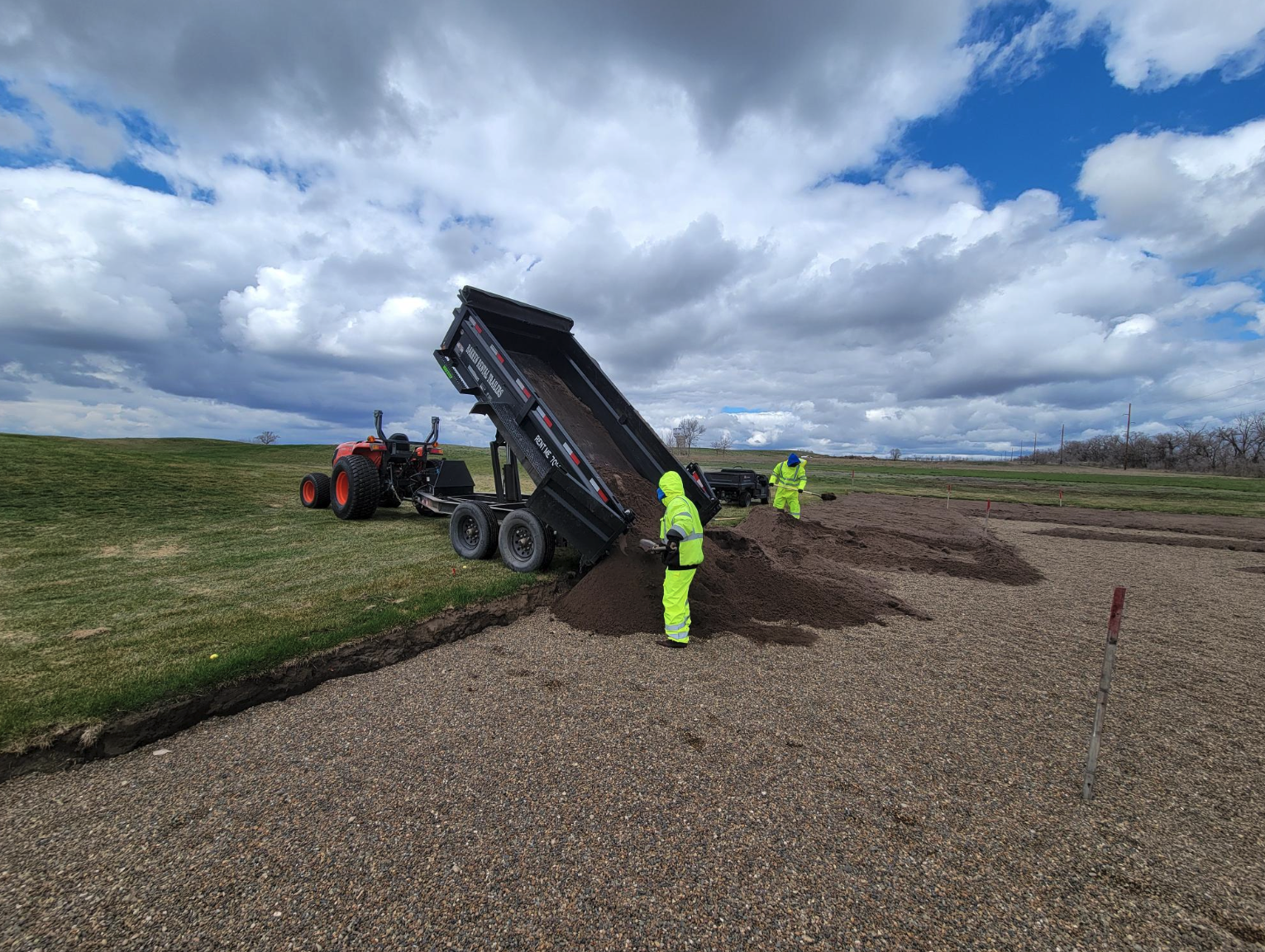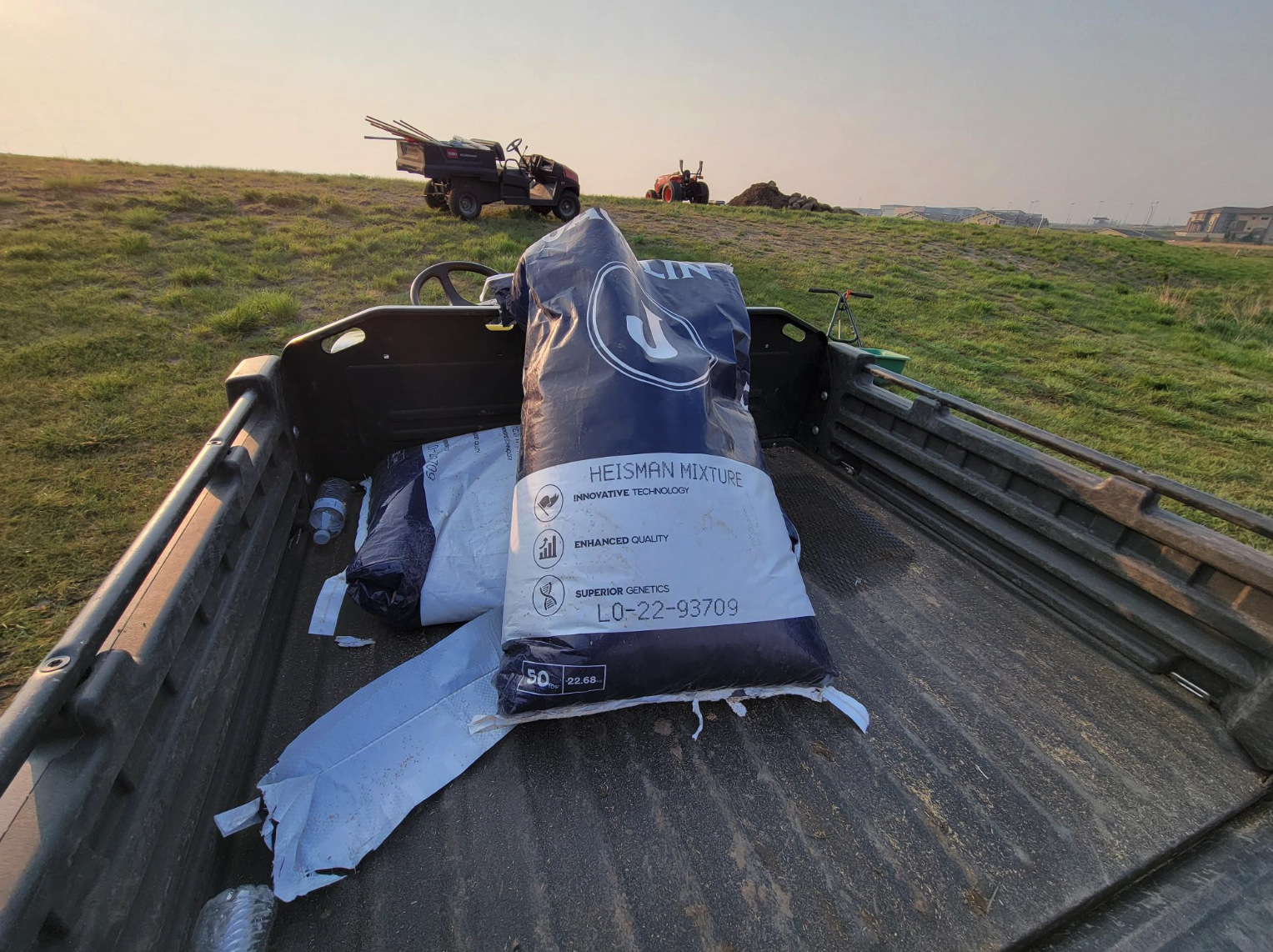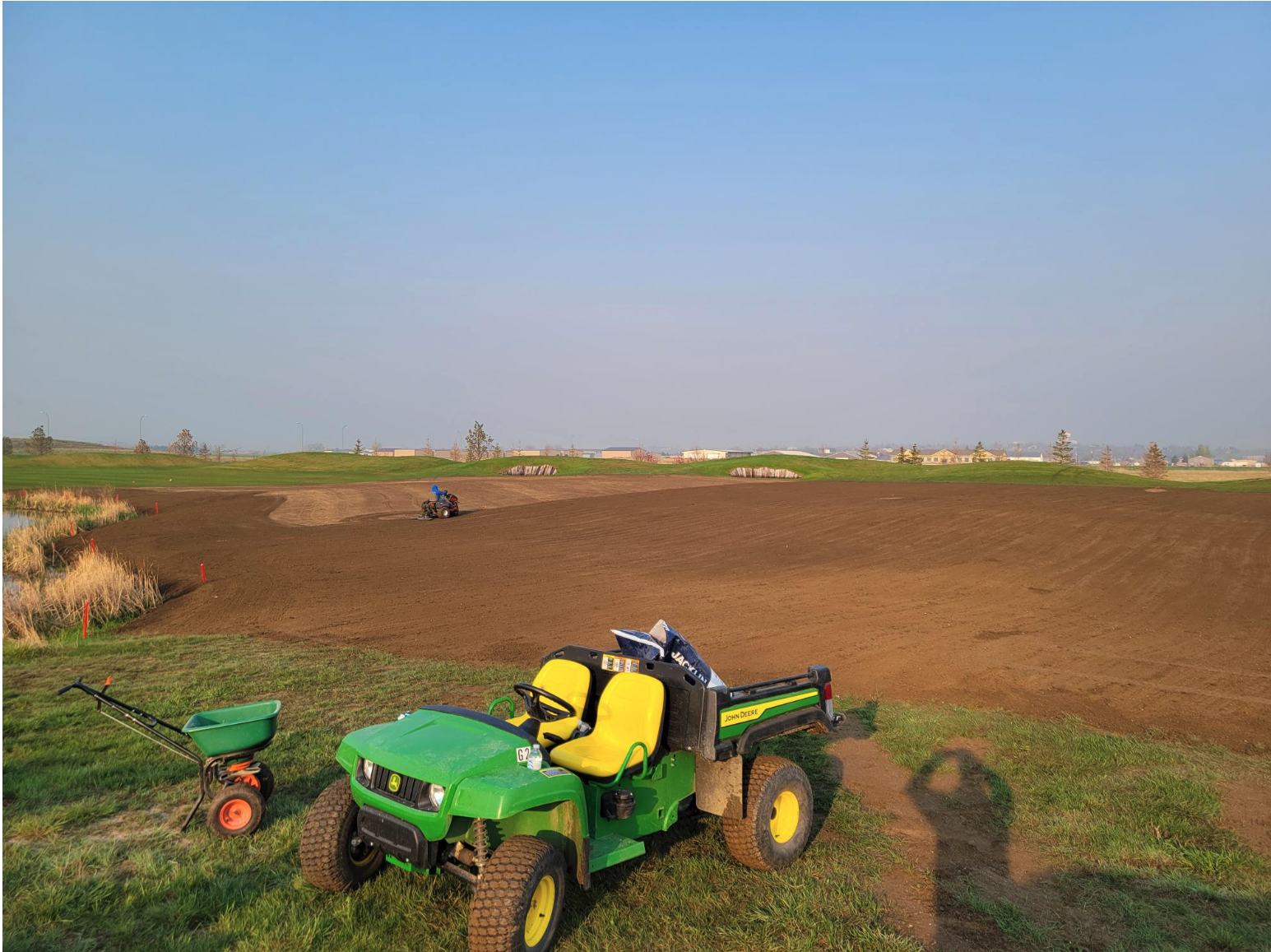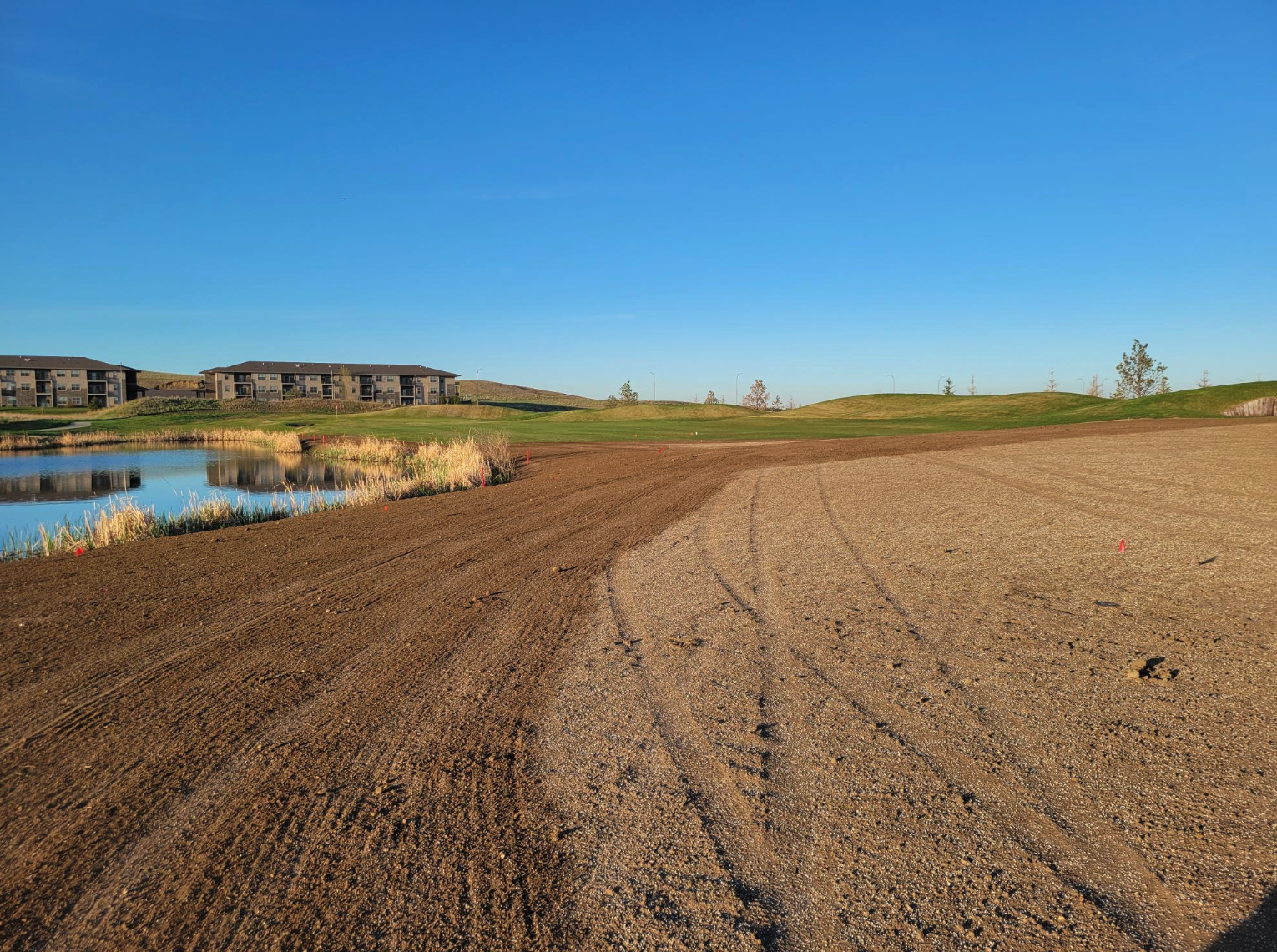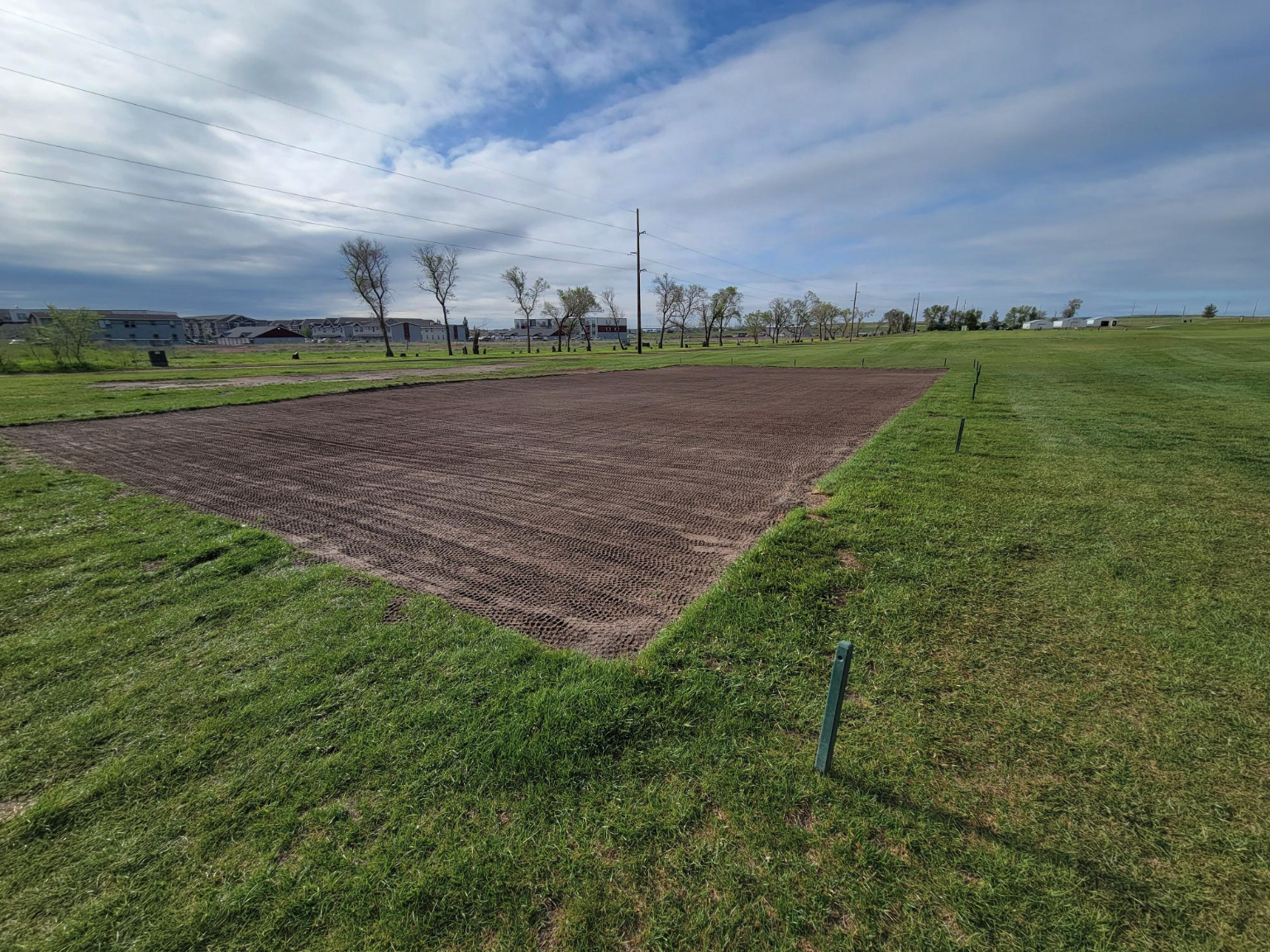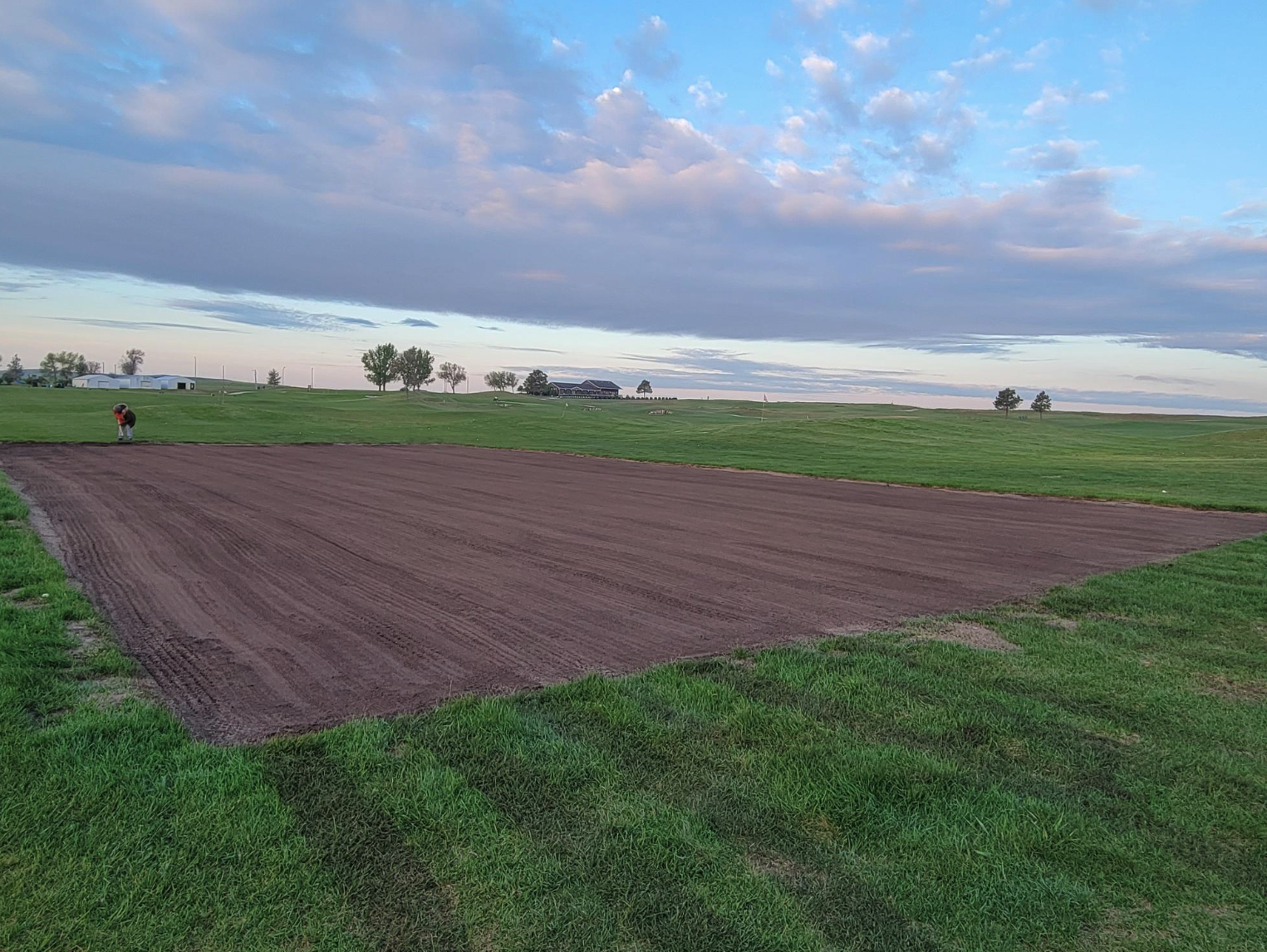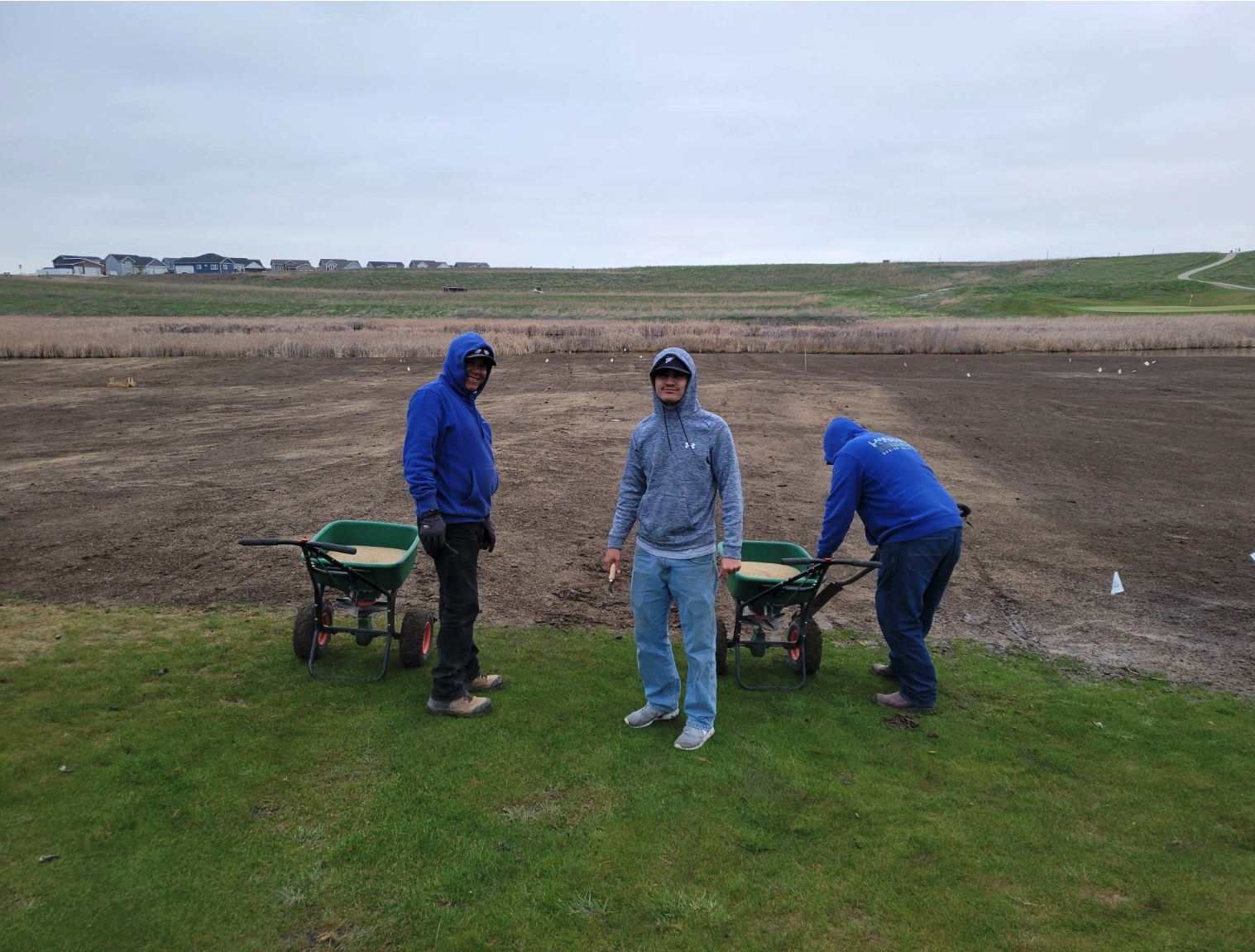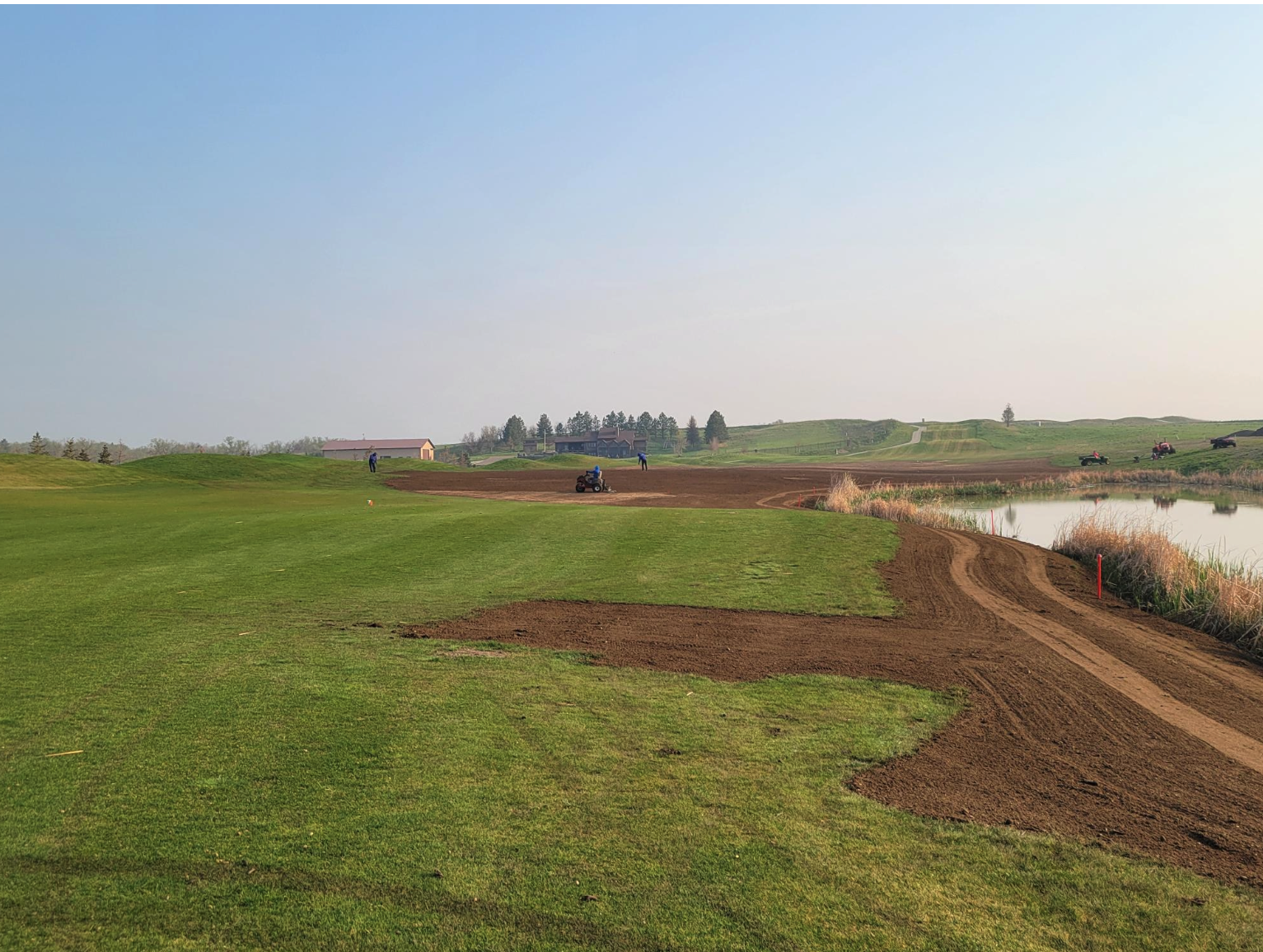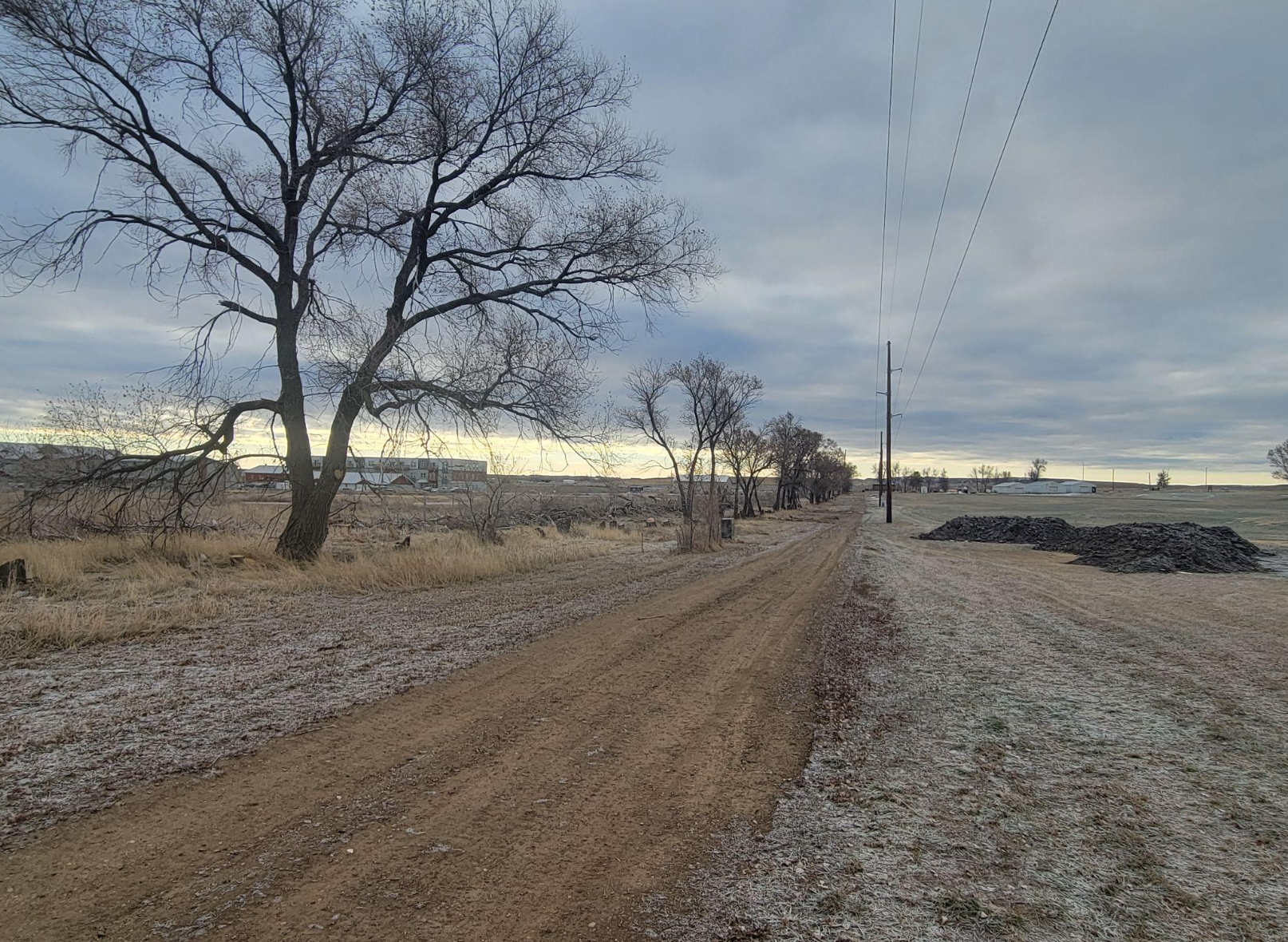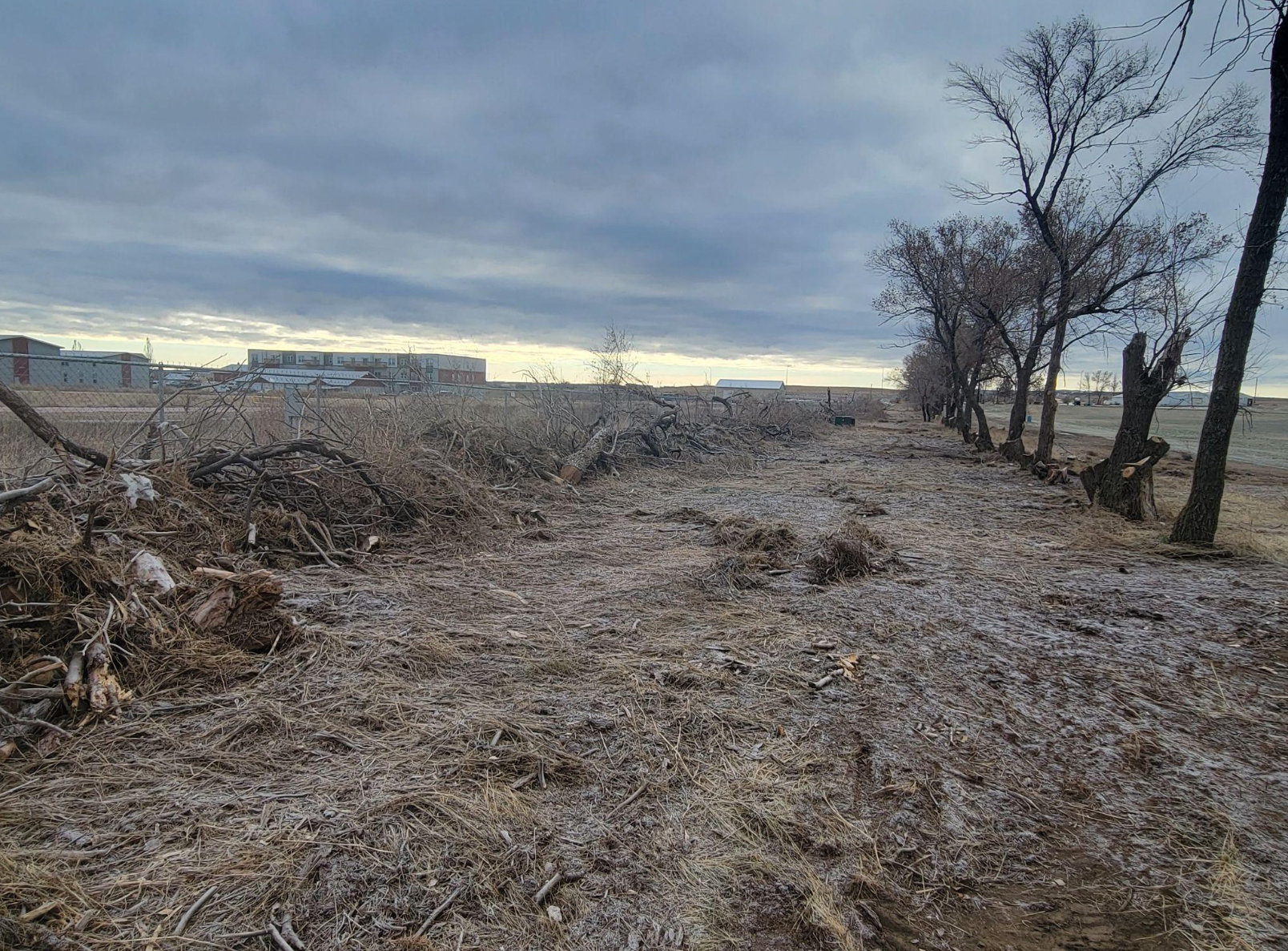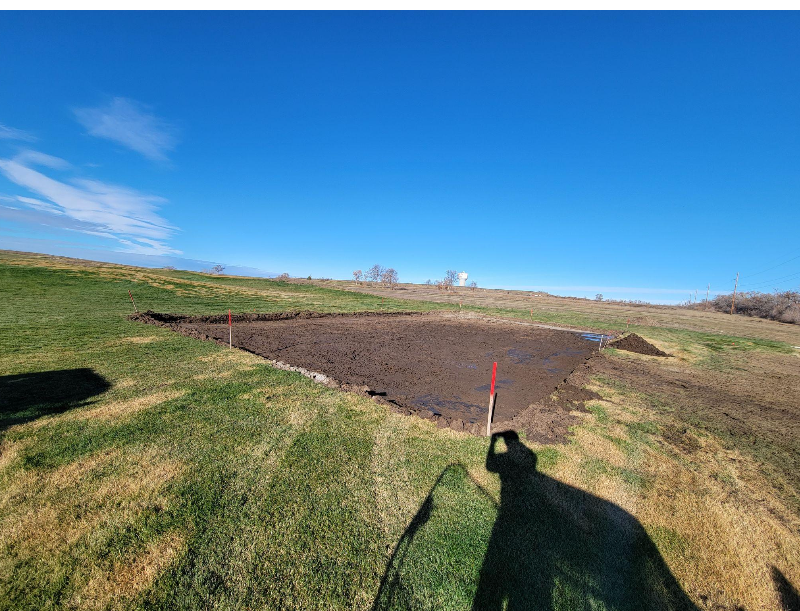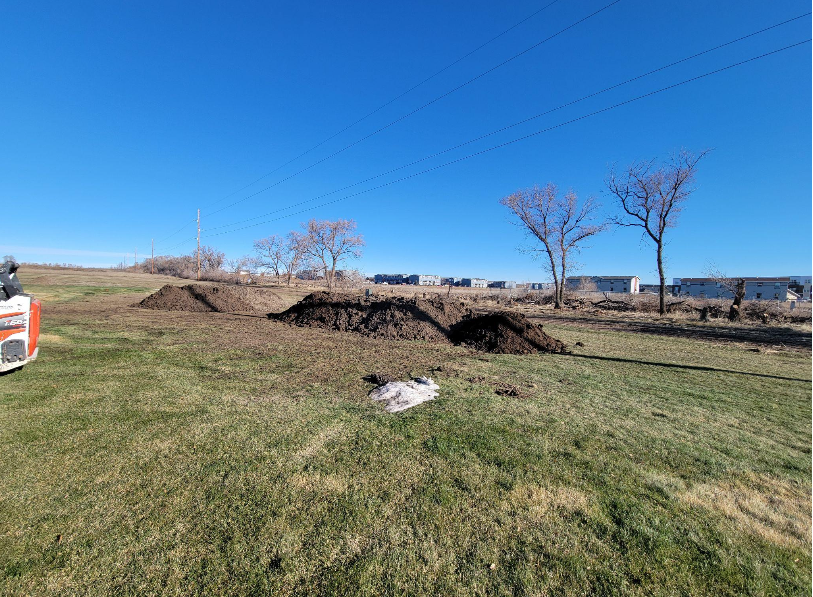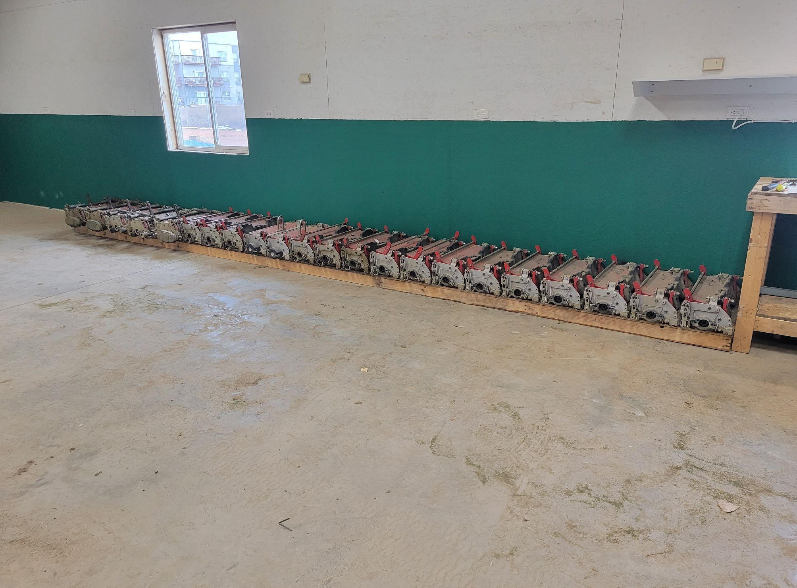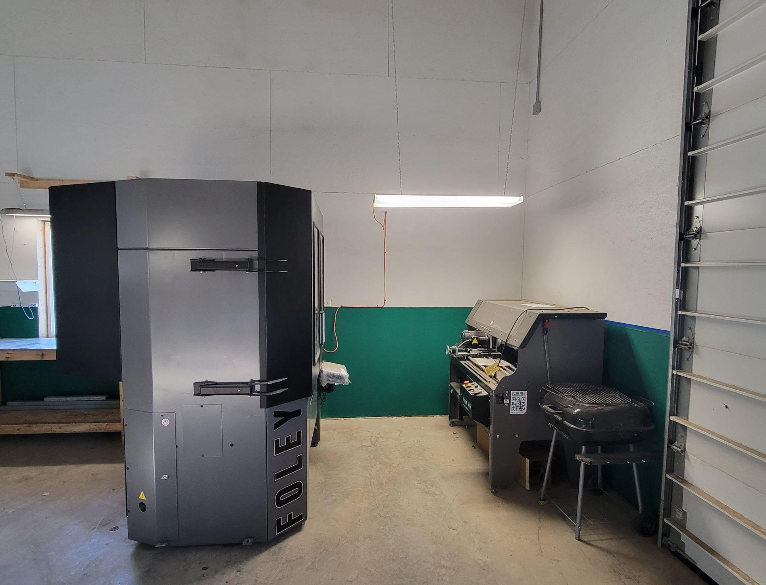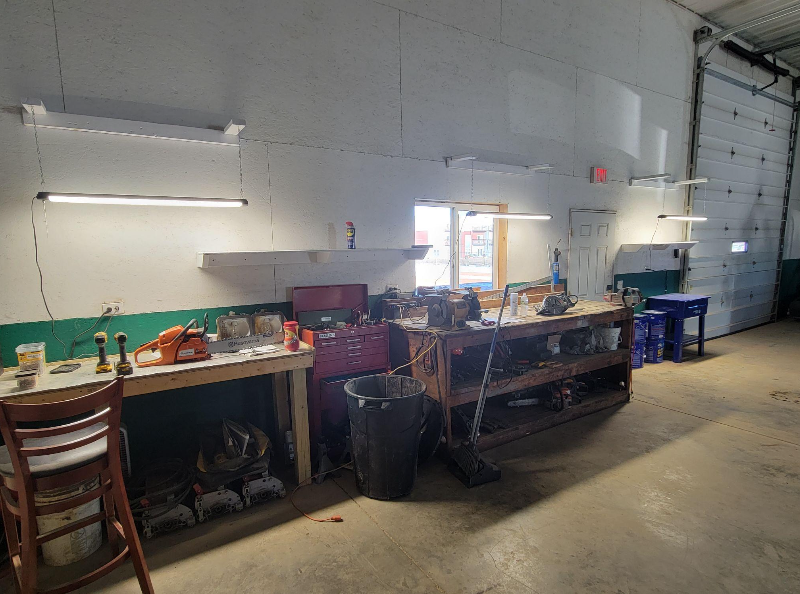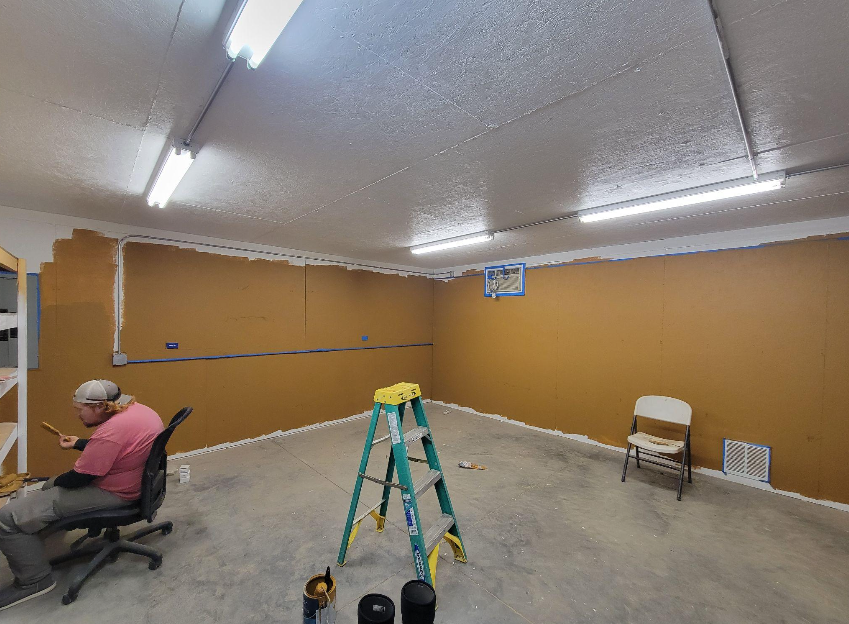On the Green Blog
Greetings from Fox Hills Golf Course!
It’s been a busy and active growing season here at Fox Hills! Moisture has been abundant, allowing the course to really show its true colors and potential with the rainfall. As I write this, we are preparing to aerify green and tee surfaces. Fairways will be aerified the first part of October. Irrigation blowout will occur around October 17–20. After that, we will decide on a course closure date, which is really weather-dependent this time of the year. Below, I will highlight some of the important agronomy activities that took place this year and some of the upcoming fall projects.
Agronomy
The most important agronomy practice put into place this year was the addition of the HCT WaterSolv Injection Systeminto the irrigation pump station. The process involves injecting two chemicals at separate locations on the pump station to counteract the high bicarbonate levels in the effluent water. The chemicals also reduce the pH level of the effluent water being used to irrigate. This type of injection curative is really a soil remediator. Wherever that irrigation head irrigates, the soil will begin to loosen its "tight grip" on all the nutrients held there and locked up because of the bicarbonate levels in the soil. It will begin to open pore space in the soil profile so oxygen and water can be held more efficiently. I had soil tests done last fall that showed an enormous amount of available nutrients in the soil profile, yet they were unavailable to the grass plant. Hopefully, over the next two to three years, we can begin to see that soil profile modified for the better. This will make fertilizer and irrigation practices more cost-effective as we will need less of each during the growing season. This is a life-saving investment for the golf course with benefits extending for years to come. Irrigation water is the lifeblood of the golf course. Without good irrigation water, your turf descends into a "death spiral" from which it cannot come out.
Course Projects
Some upcoming course projects set to take place this fall will be the continuation of the work on the new teaching tee on the backside of the driving range. Being shorthanded this spring, we did not get a chance to put the finishing grade work on it and get it seeded. It was put on the back burner because of other priorities. We will continue to do that this fall after things slow down. We will be remediating a section of 3 Fairway this fall. The right side next to the drain will be Glypho-sated and Roto-tilled to work up the existing clay soil. We will regrade that area so that it drains efficiently into the drain. We will also be adding an 80/20 sand mix to the existing soil to give it porosity and a good seedbed. It’s a small area and will not affect play on that hole other than an area that is Ground Under Repair. I continue to spoon-feed fairways 4 and 6 with nutrients to push them along. We have to reset the one drain on 4 fairway which saw the tile collapse at the standpipe. The tile itself is working as we were able to push our snake into the tile many feet. 4 Fairway is filling in slowly. It’s just a tough area to grow grass since it is sitting on an alkali flat. Next spring, the plans are to sod the areas that are very weak. We have access to a sod farm located in eastern Montana. This will be done to push that fairway's maturity along. 6 Fairway is in much better shape with a few weak areas we will continue to baby. All in all, it's been a good growing season. We are very thankful for the abundance of moisture, as it really exposes the true potential of a golf course track versus irrigation water. Also, we are thankful for the administration for the continuing desire to make Fox Hills a fantastic golf destination. We could not do it without the financial help and focus.
Until next time... "keep 'em on the green!"
Greetings from a FROZEN Fox Hills Golf Course!
Agronomy: As of the middle of February, we currently have approximately 5-6" of snowpack on the golf course. During the last warmup, I was able to get out and check the conditions of the dormant bentgrass on the greens. They looked in very good condition, with snowpack/scattered ice covering the greens. The topdressing applied at close-up has held and was protecting the growing points. With the drought ongoing into close-up, I did manage to put some water on #1 Green, #11 Green, and #17 Green with our Toro Multipro Sprayer. I used 300 gallons per tank and was able to apply a light amount by using the booms with no nozzles. This was in November, before our major freeze-up. The amount of scattered ice on the greens is of no concern, as you have almost a pure stand of bentgrass, which can handle up to 120 days under ice conditions. The ice observed was a cracked, ‘cloudy’ ice, so it’s allowing some oxygen transfer. We are STILL in drought conditions, and I’m hoping for at least one good snowstorm in March. These events usually carry snow with a high amount of water content. We need moisture across the golf course. The nice thing about late winter snows is that the snow doesn’t stick around for another 3 months or so. As I’m writing this, there does seem to be a nice warmup on the way to the Northern High Plains.
Course Projects: This winter, we are continuing to clean up the existing tree row along the driving range. Dusty has been removing dead, diseased, or dying trees, limbs, and deadfall. The current work looks really good and will allow us to keep that area mowed down during the growing season and will remove the current fire hazard created by the tall grass and all the woody fuel for any possible fires. The snowless winter has allowed us to really make a dent in the amount we need to cut down. We are also preparing the pumphouse for the installation of the new irrigation injection system that will be installed in April. This will make the toxic irrigation water we use non-toxic and remediate the soil that is irrigated. I’m excited to see the results of this injection system as we move through the year and into next year.
Winter Machine Maintenance: Our winter maintenance on all the cutting units continues. Grinding bedknives and reels one at a time. The Foley grinding system that we have is probably the best on the market! We should be finally filling up our Toro equipment lease the early part of 2025. Three new mowing triplexes and three new mowing rough units are all that’s left. This will complete our lease, which started in 2023. It’s been a SLOW fill to fill it, but we are thankful for the new equipment. This equipment takes a beating on the golf course, even with wall-to-wall concrete cart paths. This occurs just because of the golf course terrain and it being a very young course. We added an equipment manager in February. Cordell Lindvig has joined our maintenance staff. He is a local gentleman with a farming background and diesel mechanic background. If you see him on the course this spring, make sure to introduce yourself to him.
Until next time... ‘keep ‘em on the green!’
Greetings from a Snowy, Frozen Fox Hills Golf Course!
I just wanted to take this opportunity to explain the reasoning behind why the course is closed in late fall, even though there are nice temperatures. People may ask, “Why aren’t we open? It’s nice out yet.”
Basically, there are two main reasons why we shut down even though the temps are nice and there’s no snow. First, it’s the length of days/soil temps. As we get deeper into fall, the days get shorter and nighttime temps drop into the teens, 20s, and 30s. When this happens, the soil temps do not have enough time to recover or warm up. As the soil temps drop, your plant will begin to harden off for winter and the healing of the plant stops. So any divots, ball marks, cart path wear and tear will not heal until the following spring. So to protect the playing surfaces, we want to reduce as much course damage in the fall as we can. So it has to do with shorter days and colder nights and the plant not being able to recover.
The second reason is the inability to irrigate. In October, we blow out this huge irrigation system, winterizing it for the winter. Without irrigation, you are left and limited to precipitation that falls from the sky. In years with drought conditions, like this year, you want to limit as much traffic on playing surfaces as possible. If you were to stay open deep into fall with no irrigation and no precipitation, your turf, which has the inability to recover, would suffer damage. So the two reasons we close even though it’s nice outside, is the shorter days and colder soil temps and the inability to irrigate.
I hope this clears up some of the confusion as to why the golf course isn’t open even though it’s nice out.
Agronomy:
- Fall Aerification of Greens went well in September with cores being pulled and USGA Topdressing Sand used to fill the coring holes. I’m pleased to announce that the thatch layer on the greens that had been detrimental to the playing surface is now at a manageable level. Last year’s aggressive aerification program and the use of biological thatch reducing agents in the spray programs along with reducing the amount of N in applications has brought the thatch level to between 1/8” and 1/4”. This is a much better management level on a year-to-year basis. This will allow us to needle tine in the spring with no disruption to play and to core aerify in September. So you’ll have only one instance where the greens play will be disrupted by core aerification.
- Tee Aerification was a Success. All tees were solid tined using solid tine cores. We then applied over 45 tons of sand to the tee playing surfaces. Tees will continue to improve over the next 3-5 years as these agronomy practices are done each year.
- Fairway Aerification was a Success as we were able to punch solid tine holes in the fairways. There are a lot of subsurface rock that lies just under the playing surface and this can be detrimental to our turf machinery. We were able to get through the fairways with minor equipment trouble. The fairways will continue to improve each year we aerify them.
- Close-up went on without any problems this fall. All green and tee playing surfaces were treated for Grey and Pink Snow mold. I also used a Leaf Protectant and Solarous, which is a Chromatic Pigment that protects the plant surface in re-directing the sun’s rays that can cause stress and wilt. ALL greens and par 3 tees were covered in a heavy layer of Topdressing Sand to protect the crown or growing point from harsh subzero temps and wind damage.
Course Projects:
With the mild, dry weather, I was able to get started on the New Teaching Tee at the Back of the Driving Range. We were able to utilize what topsoil was left over from the Remediation Project on 4 and 6 Fairways for rough grade. I also cut and used two existing mounds or hills as a part of the rough grade. The tee’s rough grade is about 90% finished. We’ll use existing irrigation to irrigate the New Teaching Tee. The Spring of 2025 will see the Rough Grade finished and the Final Grade completed along with the Seeding of the Playing Surface and Surrounds.
2025 Plans:
Some of the new things for 2025 are:
- Adding an Injection System into our Irrigation Water that will help with the pH of the water, neutralizing the Bicarbonate in the water AND soil and making it non-toxic forever. Basically, taking toxic irrigation water and making it usable and also remediating the soils along with it.
- There will be a New Colored Flag System for 2025. Red, White, Blue flags will signify where the pin location is on the greens. Red-front White-Center Blue-Back. On any given day, you’ll have 6 pins front, 6 pins middle, 6 pins back. The flags will be developed after January 1st and be on the course when we open in 2025.
- In the Fall of 2025, I’d like to resand 2-3 bunkers with New Sand, fixing any drainage issues, and returfing the bunker faces that need it. Like to get this started and see how they hold up in the fall and over winter. Be some decisions to be made on Sand Type and whether a bunker liner is necessary in these clay soils.
- Remediation of the front right of 3 Fairway. This is a project we can do In-House. With the Addition of our New Trac Cat from Bobcat, we can utilize a lot of different mechanical pieces that go on it. We would remediate the area by tilling the existing turf up, regrading and reshaping the area to drain, then incorporating an 80-20 Sand Peat mix into the existing soil structure.
Just want to extend a BIG thanks to the Watford City Golf Club for Re-Investing $10,000 back into the Facility. I will discuss in my next blog what those $$$ are going to be used for. I also want to extend a BIG thanks to my Crew for 2024, they did a fantastic job! I couldn’t do it without them. Also, a BIG thanks to the City of Watford City, Administration, Council for once again showing excitement and the willingness to continue to make Fox Hills a Premier Destination. I look forward to an Exciting 2025 at Fox Hills. Have a Safe and Pleasant Holiday Season!
Until Next Time…Keep ‘em on the green!
Greetings from Fox Hills Golf Course! It's been a busy summer at Fox Hills! Lots of things going on!
Agronomy: The month of June and the first seven days of July saw almost seven inches of rainfall hitting the Golf Course. The rainfall was beneficial to the course in that we did not have to irrigate much at all. This reduced the bicarbonate salt buildup in the turf along with very good topsoil and root zone flushes across the course. It was also beneficial in that it firmed up the fourth and sixth fairways after the soil remediation. Not only did it firm up those fairways, it allowed me to see the drainage system in place working. It was very beneficial to be able to see and document soil drainage. After the first week in July, we began a dry weather phase. We went 39 days without measurable rainfall.We never lost any bentgrass on the greens due to wilt or heat stress. Some of the fairways showed some stress, as well as the rough. These areas have bounced back nicely after cooler temperatures and 0.65 inches of moisture. The tees handled the drought respectively. A few tees showed some stress but have bounced back nicely. Water usage was up during this dry period, and you can see it on the golf course. The turf has a dull gray color to it. That's the result of the irrigation water and the bicarbonate residue left on the leaf tissue and soil. We were able to get all tees aerified in August and topdressed with 48 tons of topdressing sand. September will see the fairway aerification proceeding. With the enormous amount of subsoil rock on the fairways, we will see how far we get without damaging equipment. It would have been nice if they had removed that subsoil on the fairways and replaced it with a good root zone mix. It is what it is, and we work around it. September will see greens aerification taking place. We will pull cores and replace them with USGA topdressing sand. Gypsum will be added at this time as well.
Soil Remediation, Fairways 4 & 6 Update: With the much colder temperatures we had when the fourth and sixth fairways were seeded and the immense amount of rain that fell on the course, I had very poor seed germination on Fairway 4. Fairway 6 was much better, although there were spots we had to go in and reseed. I decided to use the straw erosion rolls to cover the newly seeded areas, and it has paid off greatly. Fairway 4 was reseeded, and the erosion rolls were used on the entire fairway. Both fairways have turf growing on them. I'm currently feeding them every two weeks with N-P-K to push them along. I thought about opening up Fairway 6 in September but decided against it. I'm going to let it continue to fill in and mature. We are currently mowing them at one inch HOC. On Fairway 6, we had a large drain that was not draining. I was able to, with the help of the city, locate the problem area. It was some crushed drain tile that occurred at golf course construction. We were able to remove and splice in a good piece so it flows and drains now.
Course Projects: Projects we are currently working on are plugging bad spots on Greens 3, 12, and 9. Those are finished as I write this blog. We will be doing Green 11 after Labor Day. We are pulling most of this off the new bentgrass nursery.We also pulled some plugs off the edge of the chipping green. We will seed those spots shortly. We are also working on some drainage projects on the course. Some of these include along the cart paths of 18, 10, 15, and 1. This involves removing the sod that is blocking the water from draining off and replacing it with a pea gravel runway so the water can drain away. We will also be doing some drainage work on Fairway 6. Later this fall, we will begin the building of a teaching tee at the back end of the driving range. It will sit west of the nursery, and I'll utilize existing irrigation.
Golf Course Architect Visit: In August, Golf Course Architect Kevin Norby paid a visit to the Golf Course. He was very excited to see how much the greens have improved. We discussed numerous items from tree plantings to native rough areas and sand bunkers and their condition. We both agree that the next project to tackle would be replacing the existing sand in the bunkers with new bunker sand. Also, repairing the open soil faces on some of the bunkers that can lead to sand contamination. I'm currently building a project plan and format along with gathering costs of the items needed to complete this project. Decisions will have to be made as far as the type of sand used and whether we want to use a bunker liner. This is a project that, if it comes together, I'd like to start in 2026. Further updates on this will come later in blogs.
Until Next Time... 'keep 'em on the green!'
April 2024
Hello from Fox Hills Golf Course!
As we write this, we still have some snowpack left on the course. However, warmer temperatures are in the forecast, which should help eliminate it all.
Course Opening Date:
Tentatively, we are looking at the second week of April for the course opening. This will depend on how quickly the snow melts and how fast the course dries out. We are also monitoring soil temperatures to ensure safe foot traffic and avoid damaging any playing surfaces. Please watch the Fox Hills webpage or Facebook page for the confirmed opening date.
Fairway 4 & 6 Renovation:
We are still waiting for Cordova Construction to finish their work down south before they move their equipment to the golf course and begin soil remediation of fairways 4 & 6.
Course Conditions:
The course weathered the winter very well. Greens, tees, and fairways look good as we approach the growing season. We will brush the greens and run our dirt mower over them before opening to remove the topdressing used to protect them last fall.
Agronomy Practices:
- In April, we will apply gypsum to the tees and fairways.
- We will also be "chicken feeding" the tee surfaces, which involves placing sand and seed in the existing divots from last fall.
- Towards the end of the month, we will apply a three-way application of fertilizer, pre-emergent herbicide, and insecticide to the green surrounds, fairways, tees, and roughs. We may even start some herbicide spraying depending on weather and temperatures.
New Equipment:
Over the winter, we were able to acquire two new pieces of equipment budgeted for 2024: a new Greens King IV Plus Greens Mower and a Z Spray motorized compact fertilizer/sprayer applicator. Both of these additions will significantly enhance our current maintenance fleet. The Z Spray will be used for much of the green surrounds fertilization and some herbicide applications in tight areas.
Building/Winter Maintenance:
In March, we finished our winter maintenance on the equipment and installed the new golf lift on the premises. A lot of behind-the-scenes work was done this winter to ensure the high-tech machinery used to maintain the 18-hole course is in top working condition for the growing season.
Until Next Time...
Keep 'em straight off the tee and on the green!
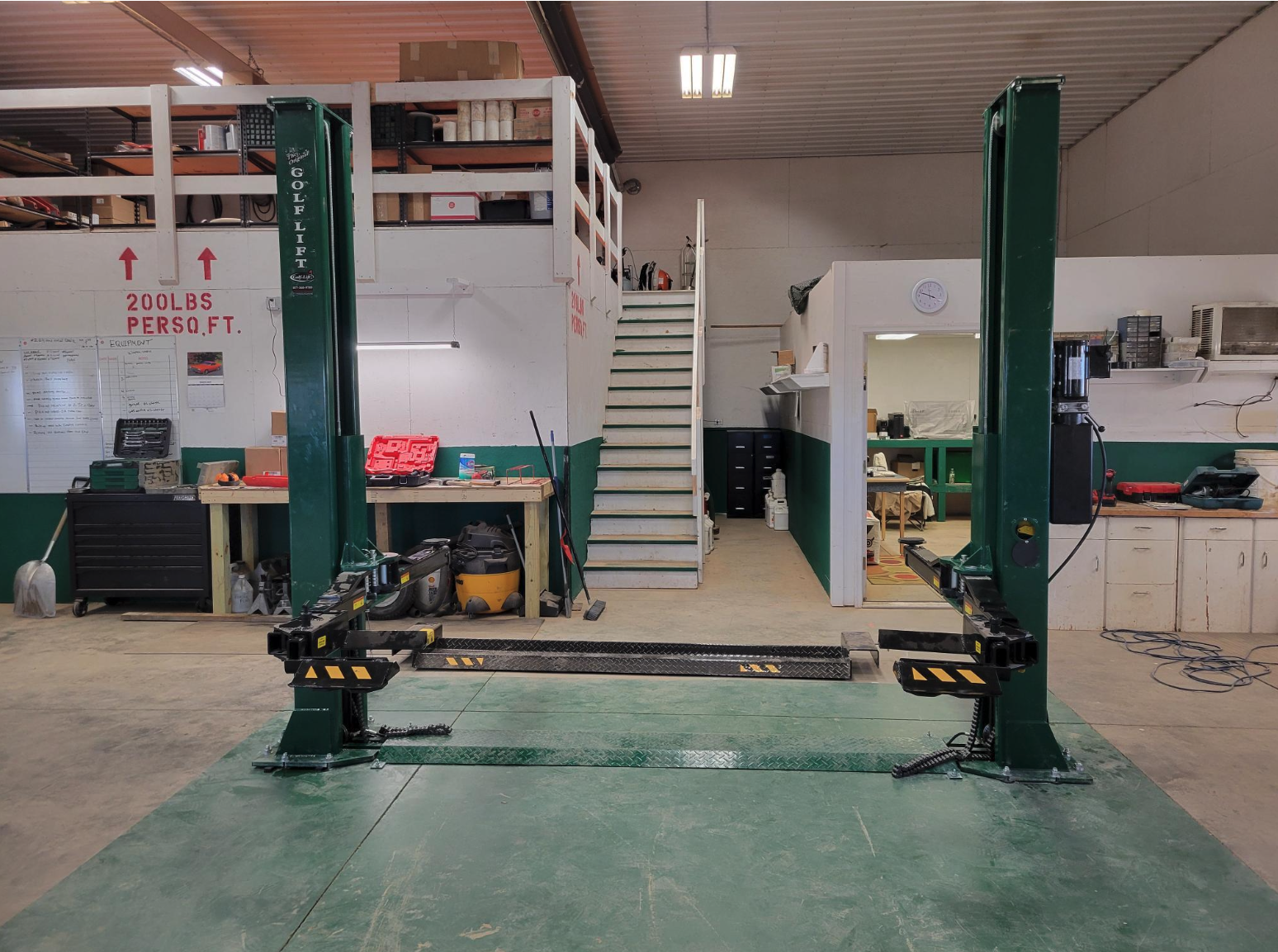
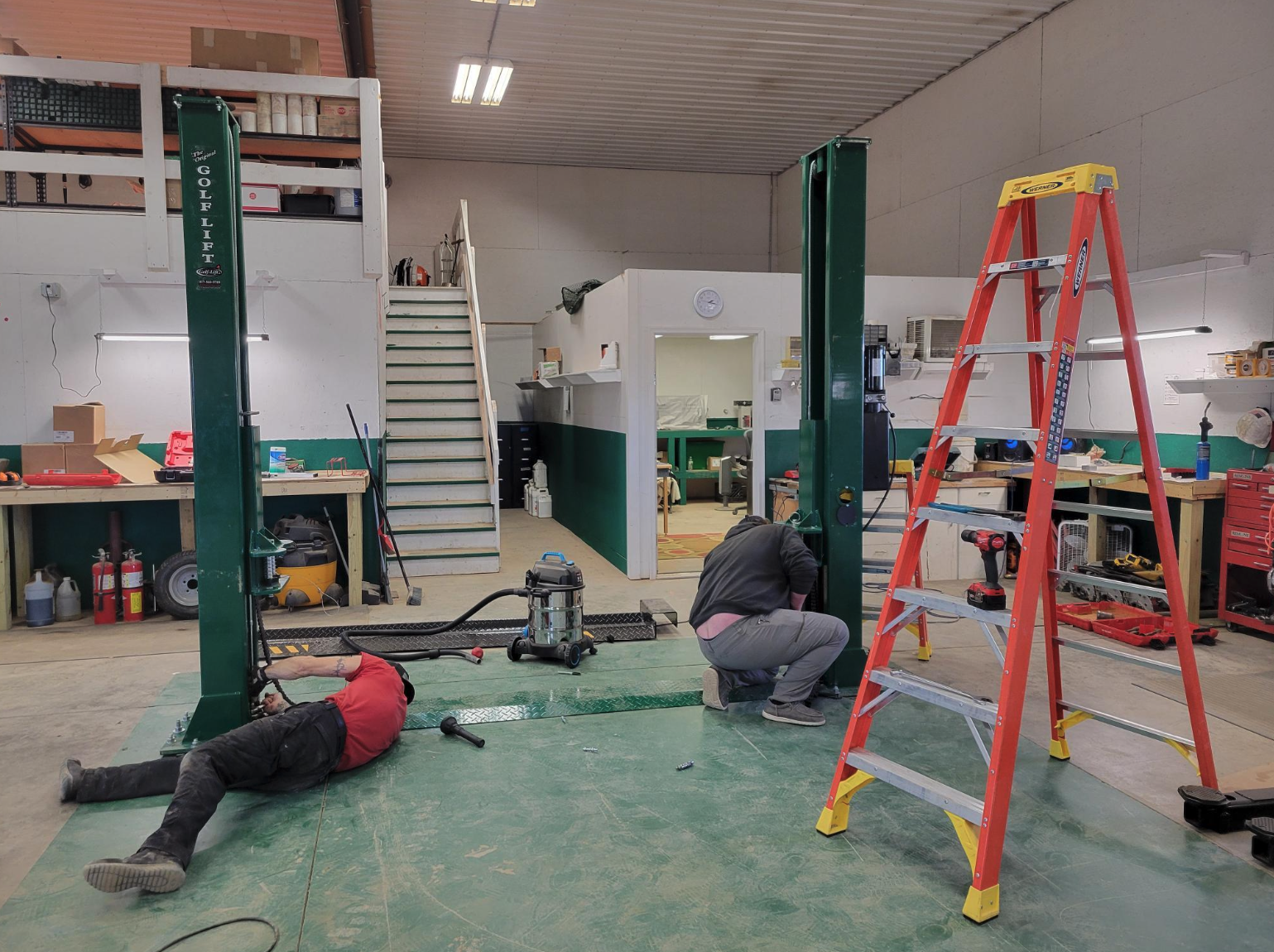
February 2023
Greetings from a snowless Fox Hills Golf Course! This month's blog report is short and sweet.
Winter Maintenance Update:
Our winter maintenance on the turf equipment is progressing smoothly. The grinders purchased by the City last year are operating at full capacity, allowing us to perform all mechanical work conveniently onsite. The new shop area is also advantageous, enabling winter maintenance on our golf cart fleet directly from the clubhouse.
New Equipment:
We've received several new pieces of equipment from our Toro lease agreement, with more to come throughout the year. While production delays persist, the situation is improving. We eagerly await the arrival of the new golf lift for installation, which will facilitate quicker diagnosis of equipment issues by providing easier access to the power units.
Course Conditions:
Following a recent tour during milder temperatures, I'm happy to report that the course is handling the winter exceptionally well. It shows ample moisture, and the topdressing sand on the greens is holding and protecting the crown areas effectively. Compared to this time last year, the life in the green crowns is dramatically different. Despite the hardening off, the lively crown areas are still visible when rubbing the turf surface. In contrast, last year's greens appeared bleached and lifeless.
That's all for now! We hope you enjoy the remainder of your winter, and here's to an early start to the 2024 season. See you next month!
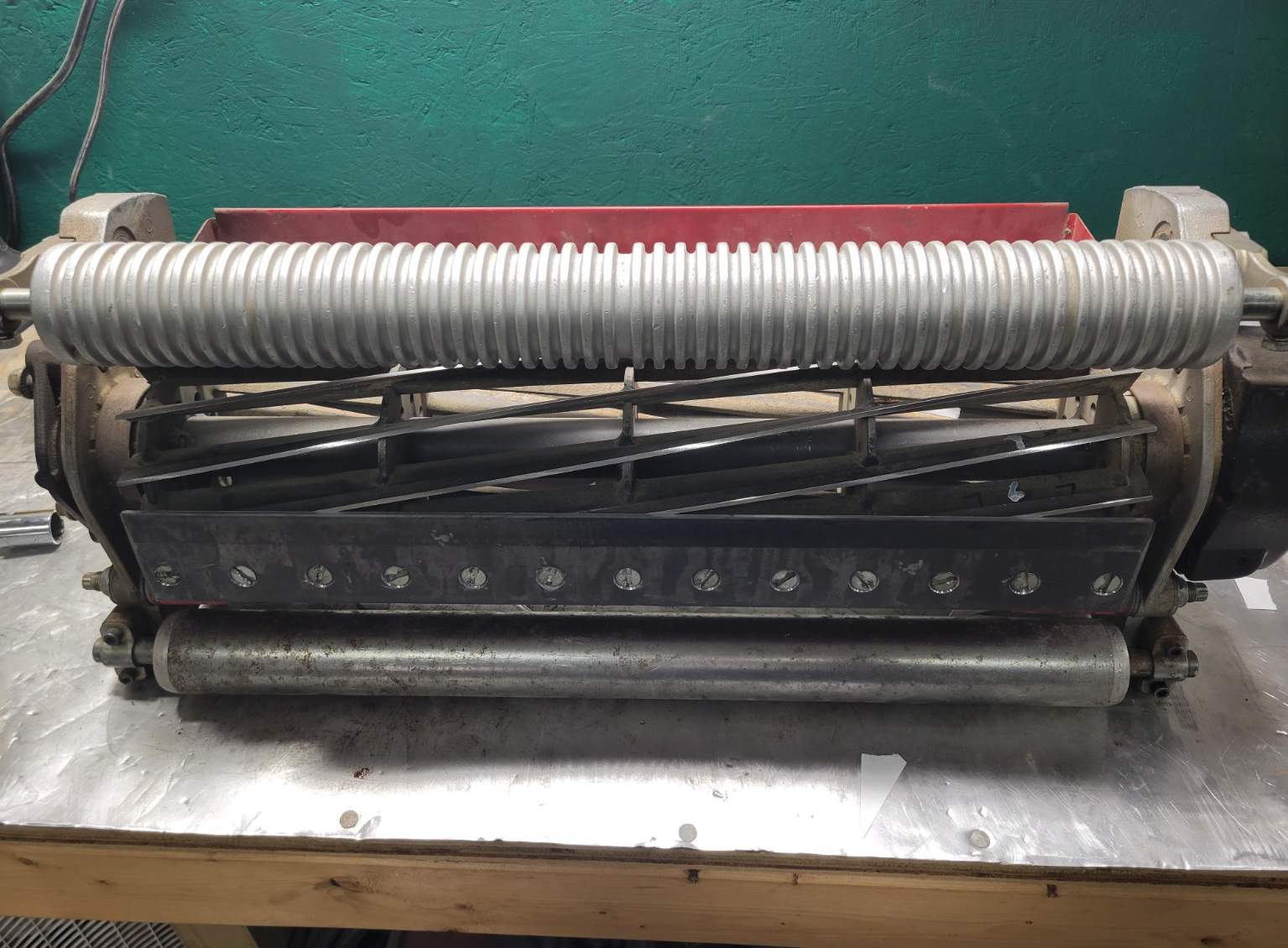
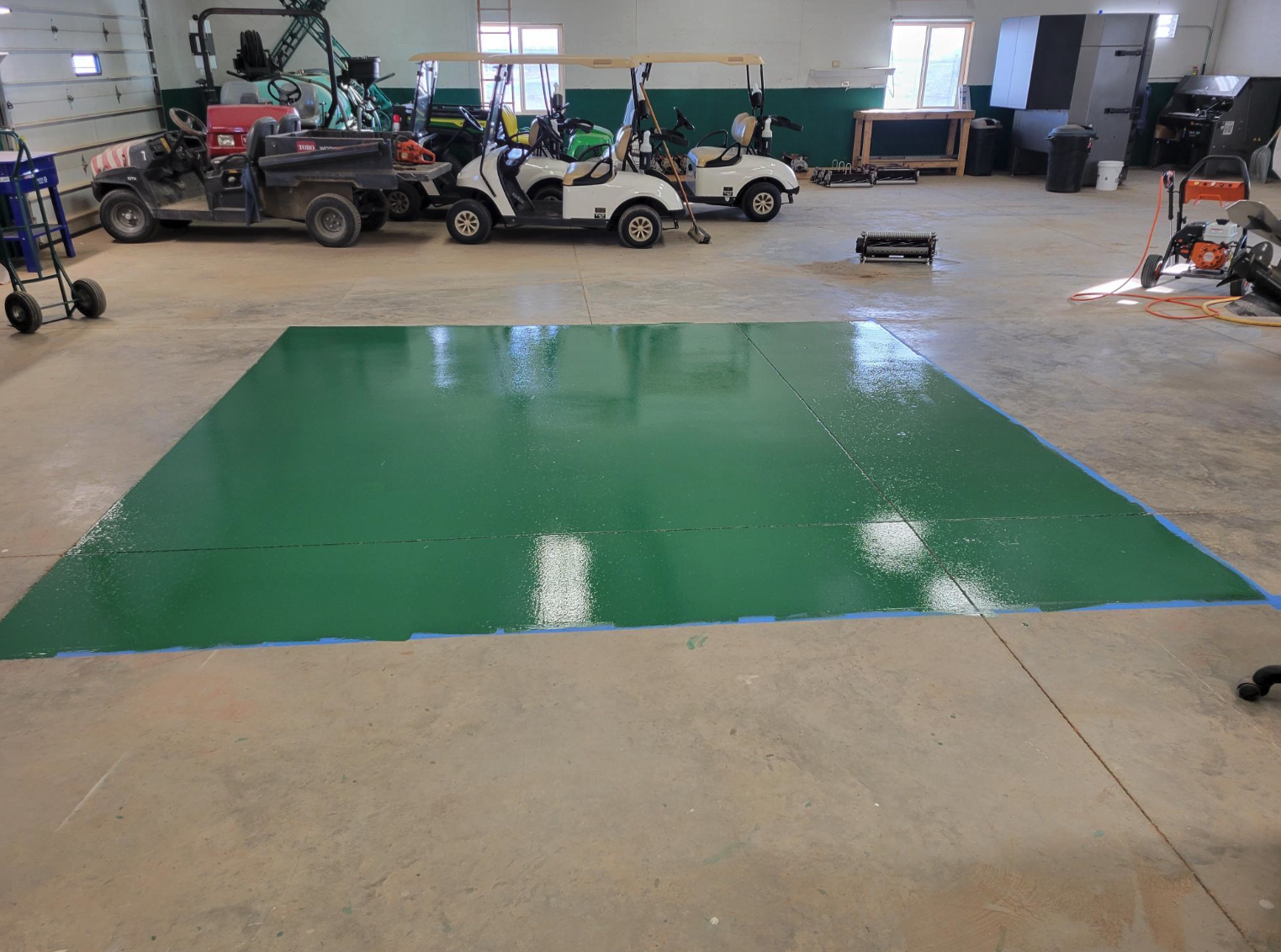

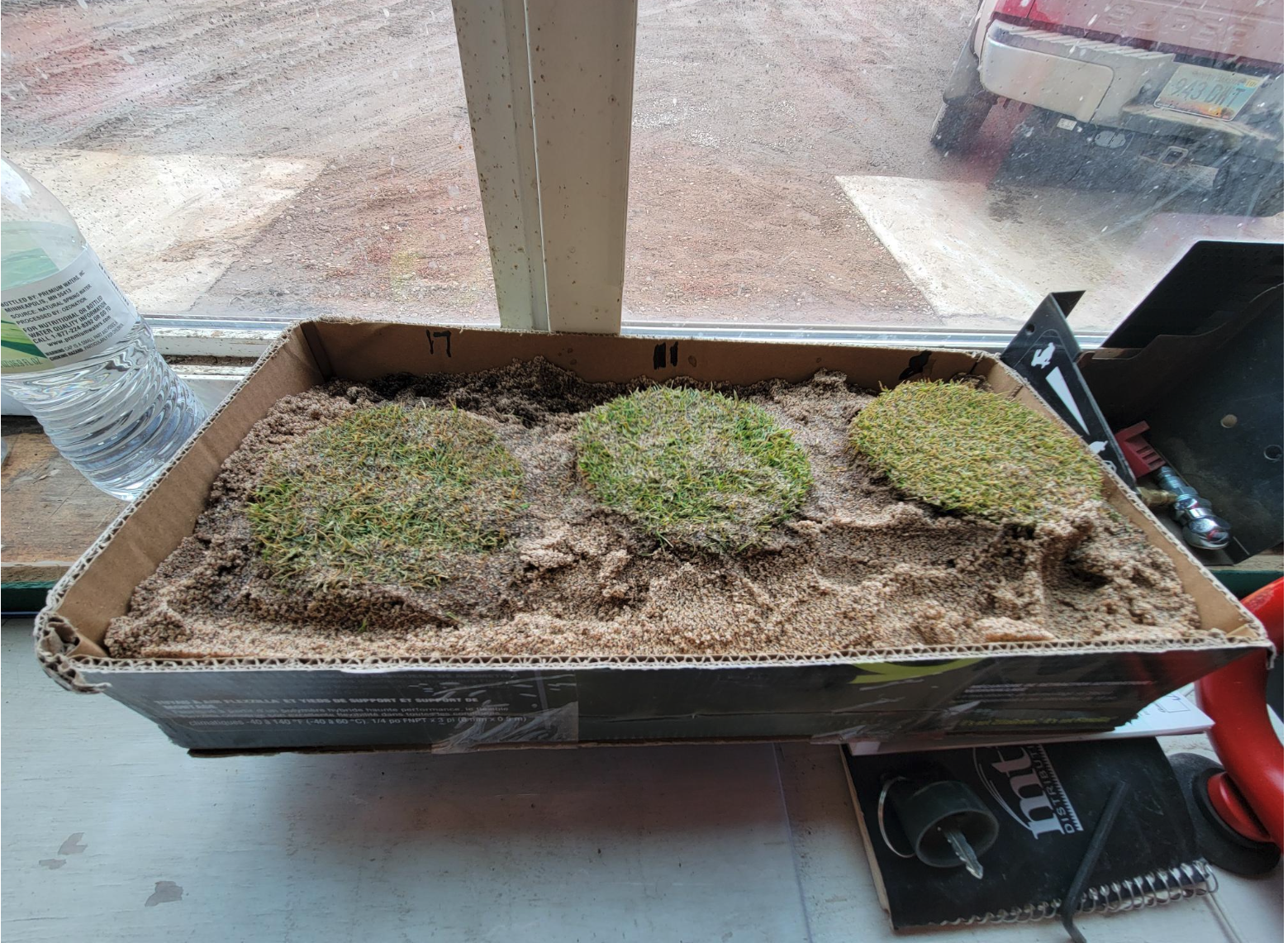
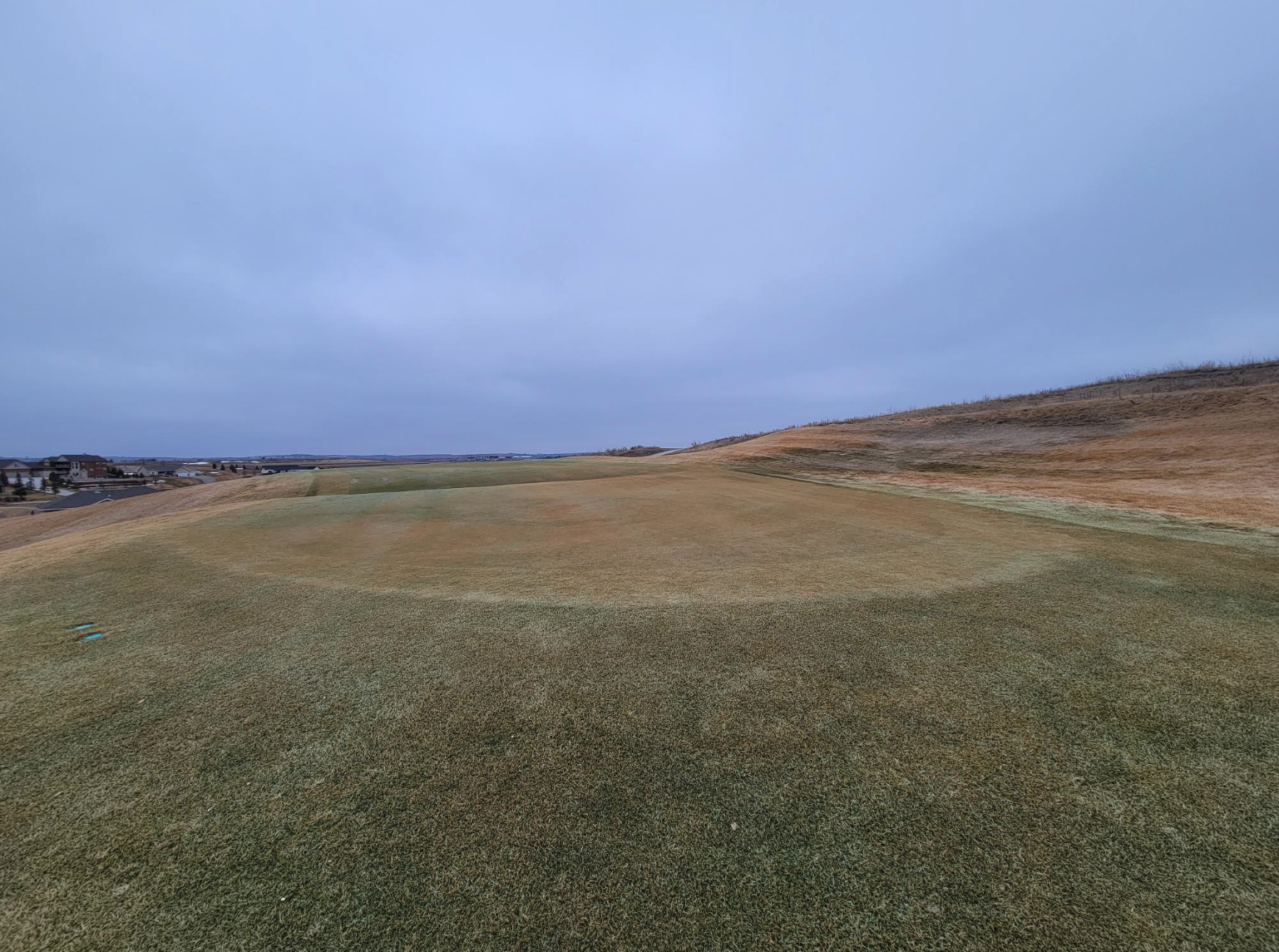
December 2023
Holiday Greetings from Fox Hills Golf Course!
November was a dry month as far as precipitation goes. I recorded just .03 inches of liquid precipitation. However, we were very moist going into November with over 2.15 inches of precipitation recorded through rain and snowfall events in October, so the course as a whole is sitting very well moisture-wise. The evapotranspiration rates are often very low during the winter months due to frozen ground and dormant turf.
November saw the maintenance staff finishing up the work on the large tree row east of the driving range. Dead trees, deadfall, dying, and diseased material was removed. All the brush and branches will be removed, and that area will be kept mowed down for easier access to golf balls and one less tall grassy area for mosquitoes to hang out.
With the mild temperatures in November, I was able to complete the nursery cavity excavation. I removed anywhere from 12 to 14 inches of topsoil, and this topsoil will be reused in the construction repair of fairways 4 and 6. The bentgrass nursery cavity will first be filled with 3/8-inch pea gravel at a level of around 2-3 inches. The remainder of the cavity will be filled with USGA 80/20 greens mix. We will level that and seed it next spring. The new bentgrass nursery will be just under 5,000 square feet and lies between two rows of irrigation heads. One of the benefits of placing it where I did was using the existing irrigation system with no added cost.
We continue to move our old shop to the new shop location. We are setting up the new building to accommodate grinding units and a large workspace with the proper tools. We will be installing a golf lift in January as well as new fuel tanks that are up to code!
The spring of 2024 will see Fox Hills in the midst of an equipment lease turnover. This is done every five years. With the addition of the new shop and grinders, we will now be able to do all our own winter maintenance on-site. This will cut labor costs as Toro in the past did all the winter maintenance on the equipment. We will do some grinding this winter, but next winter, we will have a total of 33 cutting units to go through, grind, and put back together. This, along with 11 large rotary units to go through, plus the winter maintenance on all our golf carts from the clubhouse, will be a full winter of golf course equipment maintenance.
I just wanted to take this opportunity to thank my crew as they did an outstanding job throughout the whole year. Also, thanks to City Hall and administration for their passion in making Fox Hills Golf Course and the City a must-see/visit recreational destination. I won't have a blog for January, but I'll start back up again in February with course updates and reports. I wish you all a safe and joyous holiday season and a very happy New Year!
Until next time, in your thoughts keep 'em on the green!
November 2023
On the Greens at Fox Hills
Hello from a wintry Fox Hills Golf Course.
October saw around 1.25 inches of rain hit the turf. An added bonus was a heavy, wet snow occurring around the 25th-27th. It looks like just under 10 inches fell on unfrozen ground. The moisture content in this snow was very high. I'm not sure how much of it will stick around, but it gives the turf a nice blanket of protection for now and moisture for the long run.
During October, we were able to slice all the fairways and aerify some of them. This will help open up the root zones for water penetration and oxygen and reduce thatch. The cores and slicing went down a depth of around 3-4 inches. Starting next fall, we will begin to solid tine the fairways using the Toro 848 Fairway Aerifier.
Starting October 20th, we began the irrigation blowout process. We were able to acquire a 900 Series Commercial Compressor, which enabled us to get the whole system blown out in about three days. This system here at Fox Hills is probably the largest spread-out irrigation system in North Dakota. The process includes going to each satellite and running each head a minimum of three times. Some areas that are low get a fourth and fifth run-through.
Comparing irrigation water usage this year to past years, we used about half the total volume in gallons. This season, we recorded around 32 million gallons of effluent water running through the pump station, compared to 60 million last year and 62 million the year before. The irrigation effluent water reduction can be attributed to daily monitoring of turf moisture conditions, monitoring weather forecasts, the use of wetting agents, and monitoring hot spots and wilt with a hose, pellet, and nozzle. The reduction in effluent water usage also reduces the amount of bicarbonates and salts that are applied daily to the turf, resulting in detrimental turf conditions happening over time.
The month of October had favorable weather conditions to put down a light snow mold chemical application to the fairways. Greens and tees also had snow mold applications applied to them with the Toro 5800G Sprayer. These chemical fungicide applications should protect the existing turf from any snow mold outbreaks during the winter and early spring.
Just at close-up, all greens were topdressed with a heavy layer of USGA Topdressing Sand. This sand will settle in and protect the crown of the plant or growing point against winter desiccation and subzero temperatures. Studies have shown that this method of winter protection is the most economical and least labor-intensive method used to protect putting surfaces during the winter months. In the spring, we will brush and blow any leftover sand off the greens, resulting in a very smooth putting surface as the course opens.
At the end of the season, you may have noticed some stakes and dug-out tree wells on the golf course. These are locations for possible tree plantings next spring. These locations are not set in stone and were left over the winter for discussion. I have access to the State Tree Nursery and can get 2' potted trees along with some bare root stock for relatively inexpensive prices.
Trees looked at possibly planting would be native species: ponderosa pine, bur oak, aspen, cedar, juniper, American plum, and Colorado blue spruce. When I took the position, I was informed that at least 60 trees that were supposed to be left on the course were taken down. Not sure why, but they were. I don't want to take away from the links-style design, and I believe that by adding in as little as 100 trees at strategic locations, you'd still have that links-style golf course footprint.
These tree additions would benefit the local wildlife and give screening to areas and characterize some of the holes with definition and backdrop. The cost of this whole project would be under $1,000.00, a very cost-effective way to improve your golf course.
My last blog for the year will be early December, then I will start back up in February again. Until next month...
In your thoughts, keep 'em on the green!
Here is a link to winter topdressing: https://www.usga.org/content/usga/home-page/course-care/regional-updates/central-region/2017/dont-put-your-greens-to-bed-without-a-blanket.html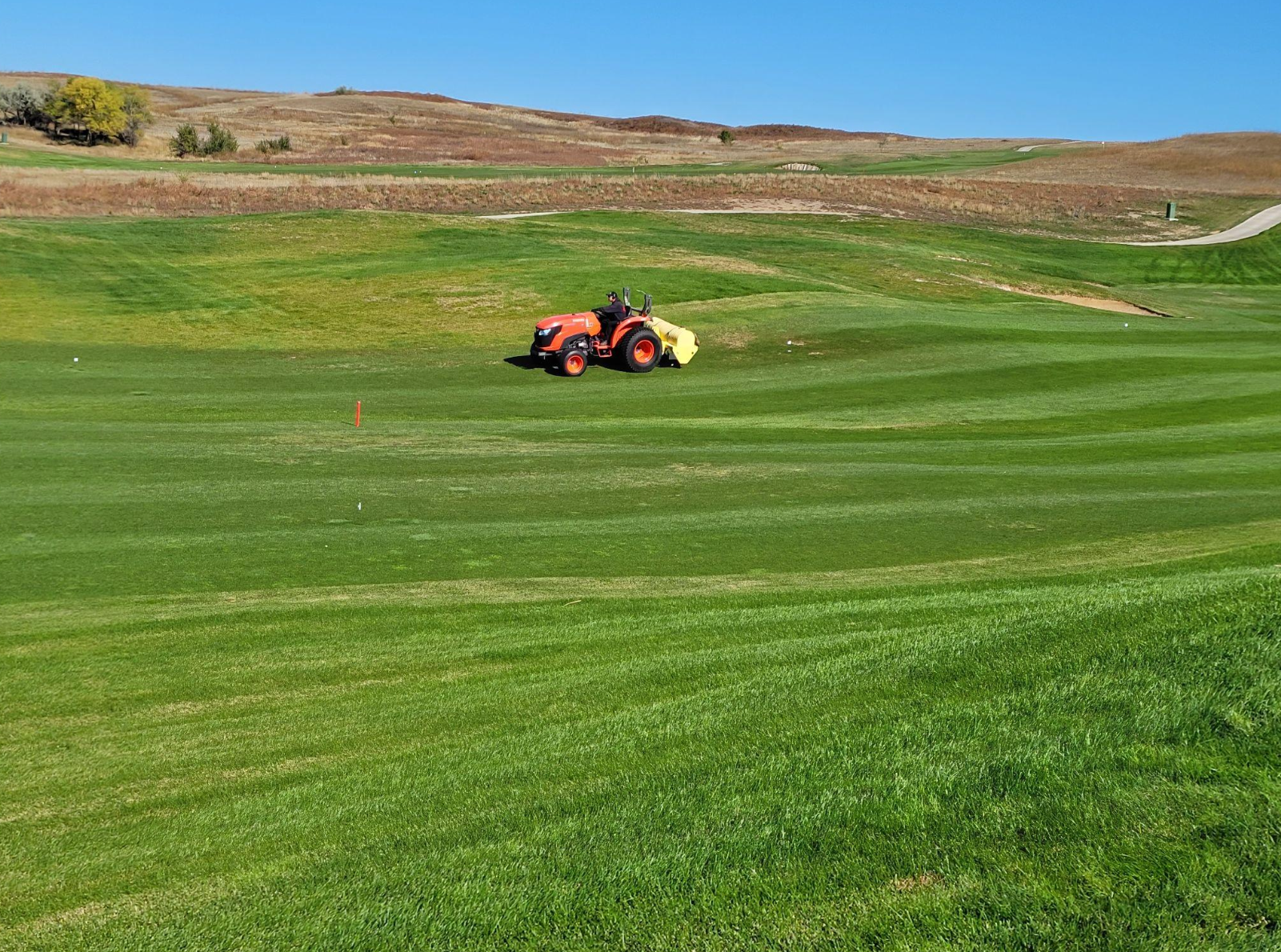
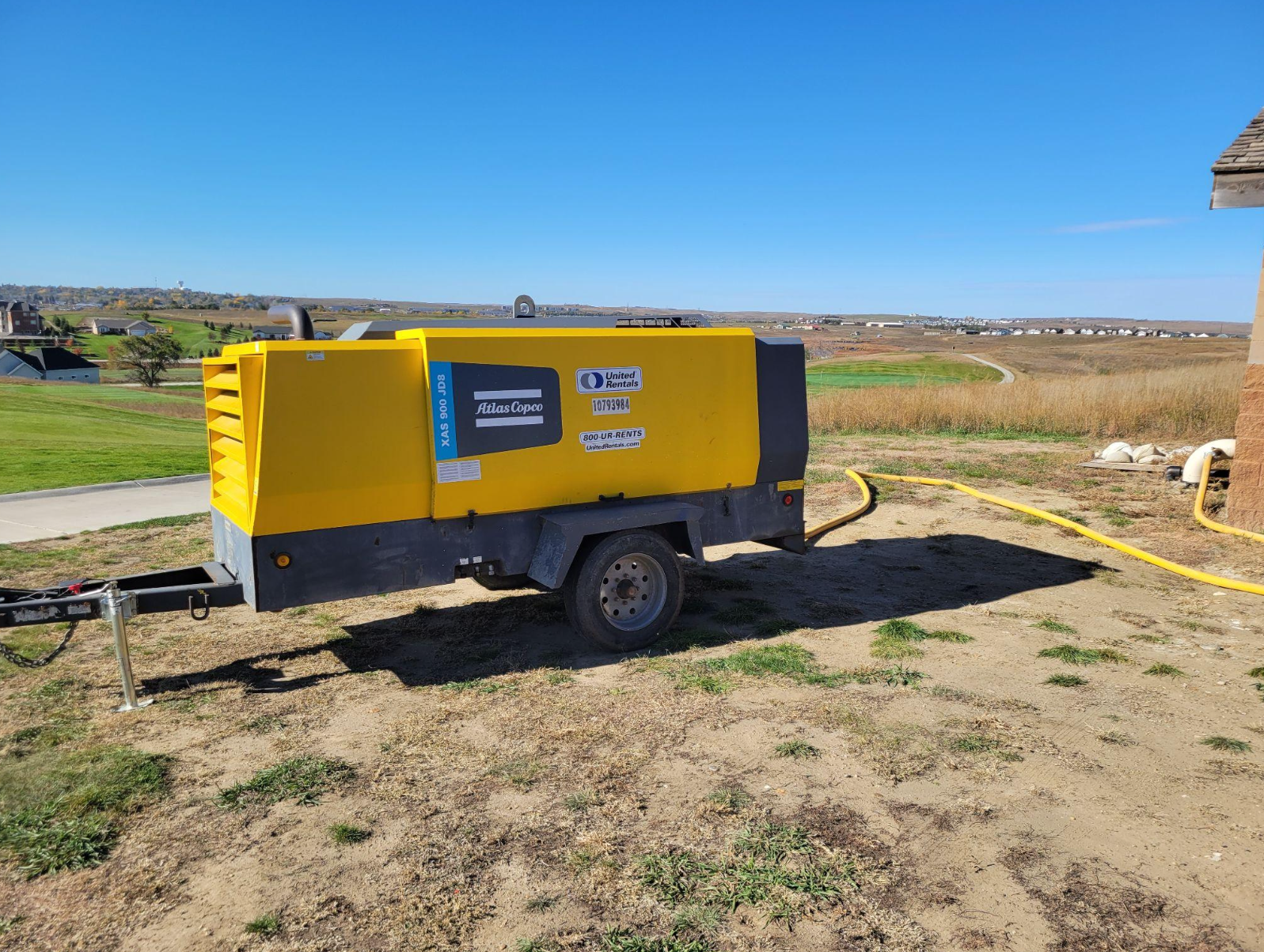
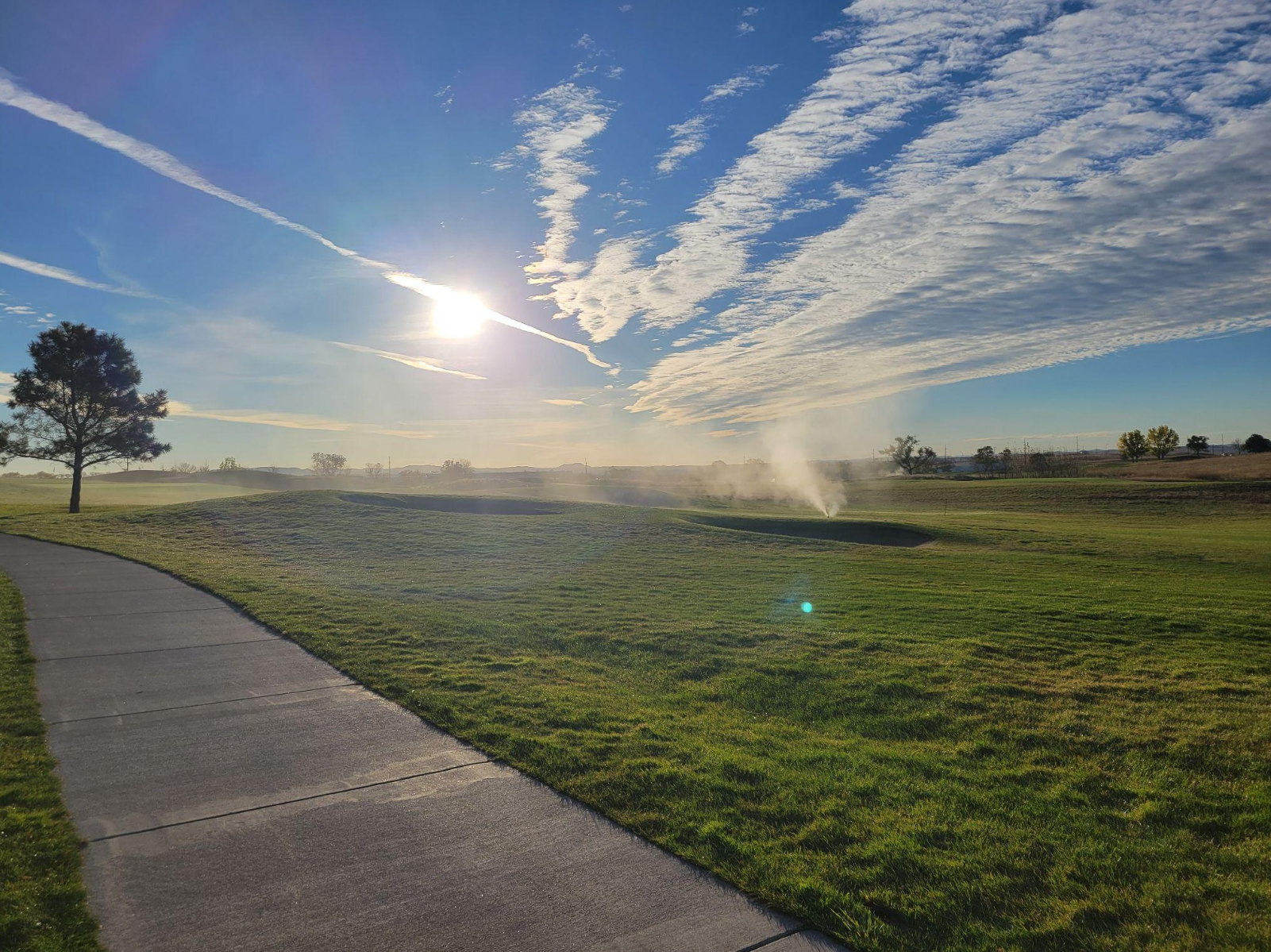
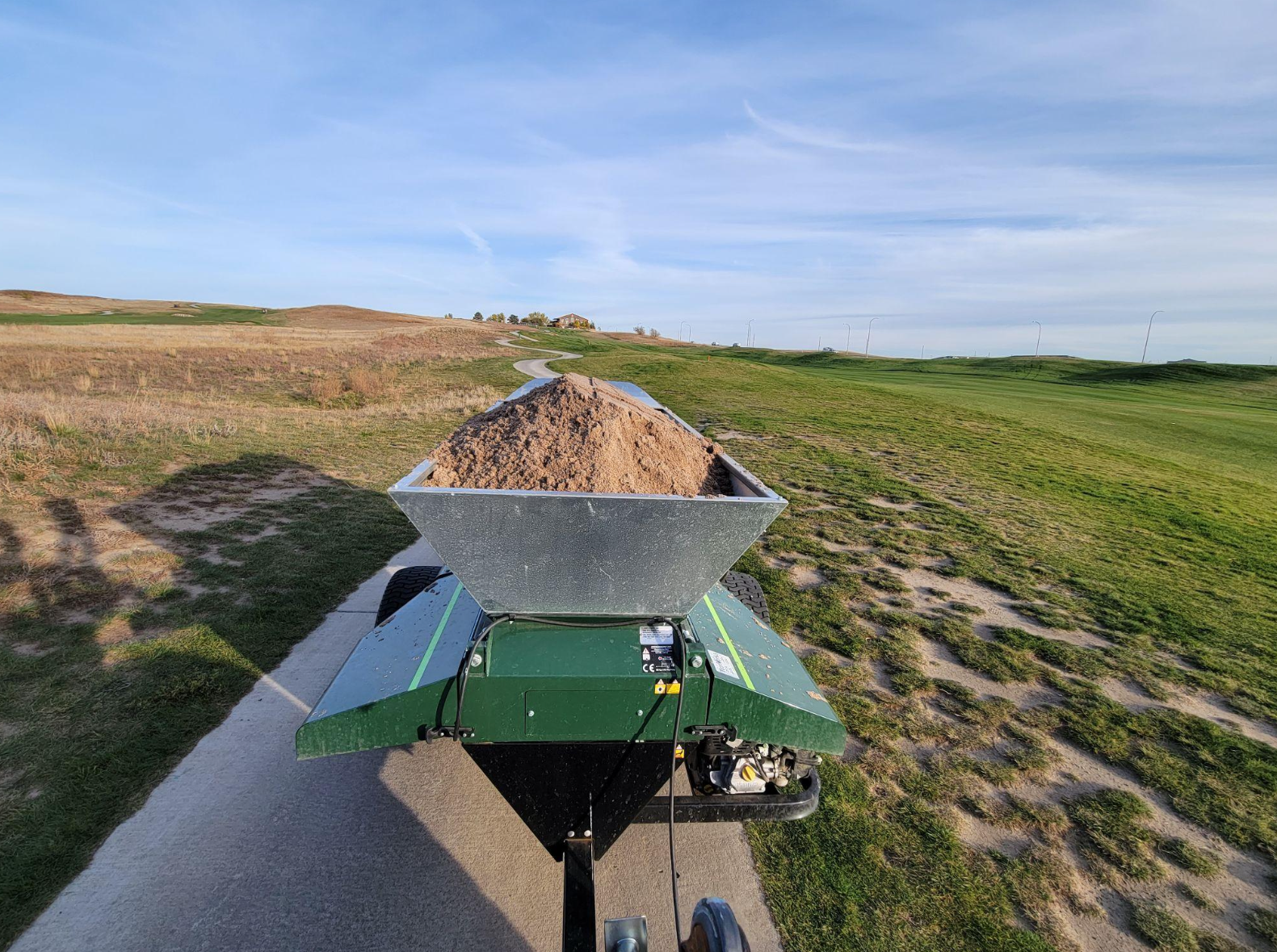

October 2023
Greetings from FOX HILLS GOLF COURSE!
September saw around 1.25 inches of precipitation hit the course. The course has responded well to the rain events, highlighting the nutrients applied in August and early September.
September's greens aerification was a success! We have reduced the thatch levels on the greens through our core aerification and chemical applications. Starting out this spring, there was over 1/2 inch of thatch on the greens. This fall, we are down to just over 1/4 inch. We will continue to core aerify until we reach around 1/8 inch or lower.
Sodding bad areas on the fairways continued in September. We were able to redo the area on 9 fairway where the bottleneck begins, plus some areas on 17 fairway. We used the bluegrass sod from the new bentgrass nursery area. None of that bluegrass was wasted; it was all reused on the golf course.
Work continues on the tree rows between 9 and 11. We are removing deadfall and lifting the existing trees up. Our fall gypsum application has already been applied. Tees and fairways received approximately 5 tons of gypsum each. This will modify the existing soil, allowing for better water penetration and counteracting the high sodium levels found in the soils of western North Dakota.
In October, the irrigation system will be blown out the week of October 16th. This secures and protects the existing system from any winter freeze-up of the pipes and heads and severe damage. By the end of October, we will be starting the cleanup of the tree row east of the driving range. We will be removing deadfall and all dying or diseased wood. This has actually become a fire hazard, especially with all the current deadfall in place.
As far as course closing dates, this will be dependent on weather conditions. We will stay open as long as the weather allows us to. Remember, any turf damage sustained now will not recover until next spring when the soil temperatures rise again.
Final close-up procedures will include snow mold applications to greens, tees, and fairways. This will be followed by a healthy level of topdressing applied, which will protect the crowns or growing points from the severe winter winds and sub-zero temperatures. It's like putting a thick blanket over the turf to protect it.
Until next month... enjoy your fall and keep 'em on the green!
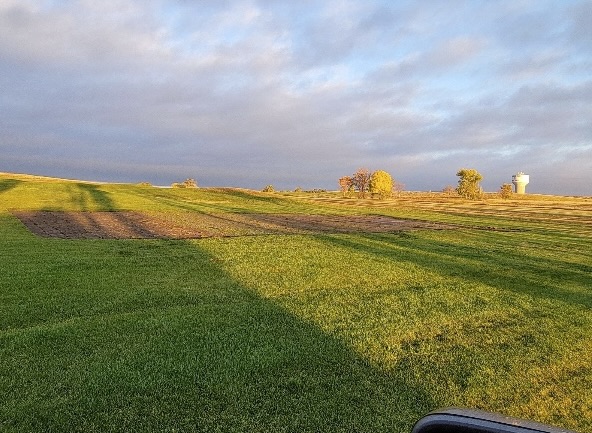
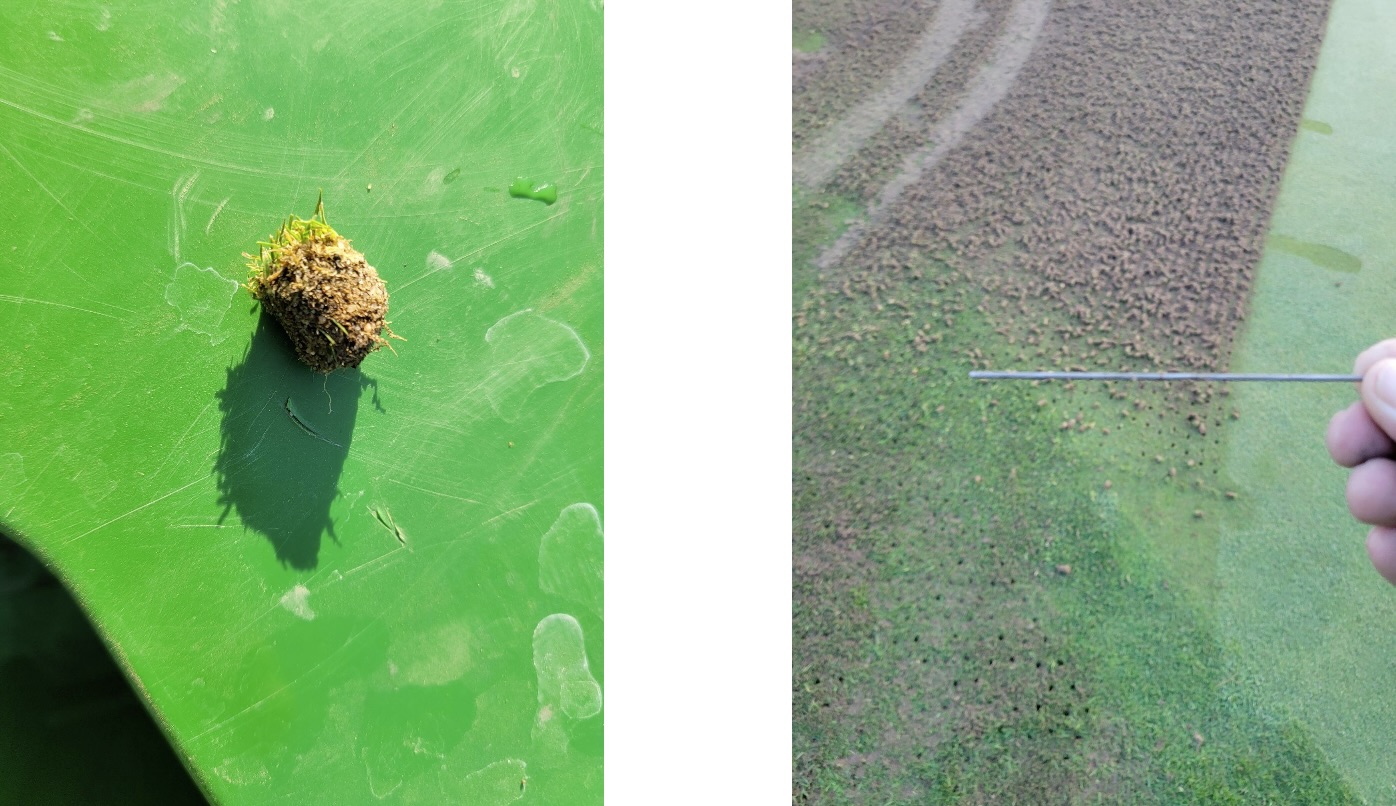
September 2023
Happy Early Fall from Fox Hills! September is upon us and you can see the HINT of Fall by the changing of the leaves on the local Cottonwood Trees. It's daylength that triggers the change in color. Shorter days trigger a chemical response in the leaves causing them to stop photosynthesizing and change color. Best time of the year in my honest opinion.
In August a little over 2’’ of Precipitation fell on the Golf Course Grounds. August saw the continuation of sodding bad areas in the fairways plus the continued chemical application to fight the intrusive broadleaf weeds and undesirable grasses on playing surfaces. The new bentgrass nursery on the north side of the golf course continues to take shape as we use this bluegrass sod to repair areas on the golf course.
Our Remediation Project on 4 and 6 Fairways was postponed to April of 2024. Unfortunately, the contractor ran into labor problems with his best shaper picking up and leaving for another state. We will start on 4 and 6 next April.
September will see the maintenance team once again aerifying greens. We will pull cores and replace with sand reducing that thatch level even more. We will add gypsum and topdress after that. Plus we will over seed some light areas that are struggling to fill in. This is scheduled to take place September 11 and 12. We will also be fertilizing around green surrounds and slicing/topdressing tees as well.
Our move to the new maintenance center is slowly taking place. Public Works built a new road into the facility and in September fencing will be completed around it. Top golf courses have great maintenance facilities which helps in keeping machinery in top working order. It’s also a great command center for those in leadership roles, making it a Turn Key Operation during the growing season. We will be adding in a chemical storage building and some cold storage buildings for equipment storage, fertilizer Storage , and Golf Cart Storage. Feel free to swing by and take a look when we are around.
Until next month, enjoy your Fall golf and KEEP 'em on the Green!
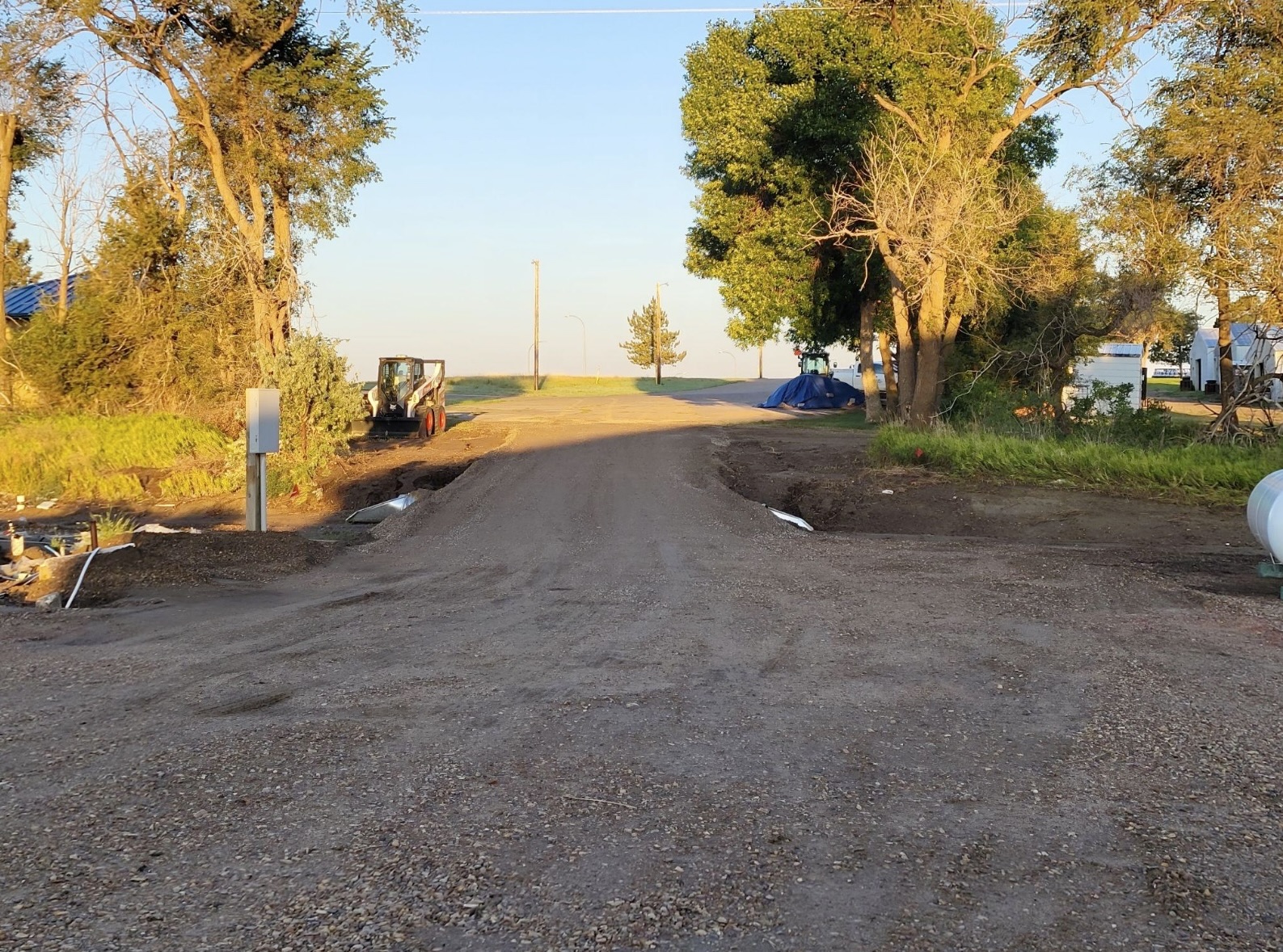
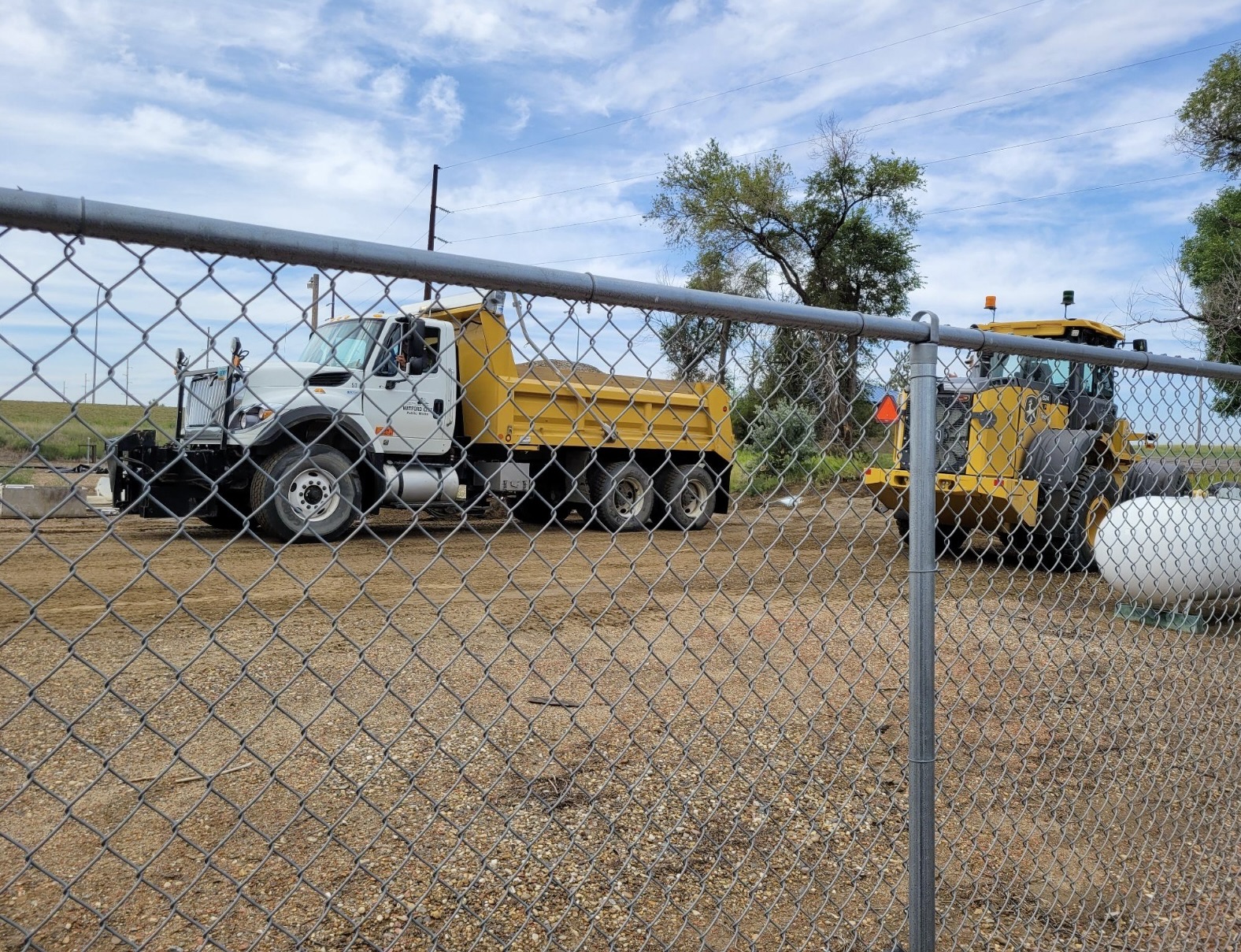
August 2023
Hello from Fox Hills! August is suddenly upon us and we are in the homeward stretch towards Fall. TBH Fall is my favorite time of the year for managing turf. It's a great time for overseeding and planting trees as well as reduced stress times for growing turf at low height of cuts. In the Fall, playing surfaces that have been stressed and damaged have a fall recovery window due to the shorter days and cooler temperatures. On that note, let's discuss some water management tools used in Turf Management.
July saw just around 2’’ of precipitation for the golf course grounds. Greens, tees & fairways experienced a limited amount of wilt and stress. I attribute that to the timely rain and the use of a wetting agent called zipline on greens, and the use of a pelletized wetting agent called Vivax . Greens are more susceptible to wilt stress due to the Lower height of cut and the ridges and undulations built into the green complexes that are susceptible to high wind heat stress .
Wetting agents are applied to playing surfaces via a sprayer at the label rate. They are then ‘watered in’ immediately after the application. A wetting agent will either help the soil profile ‘RETAIN’ water in the root zone or it will help the soil ‘ FLUSH ‘ the root zone of water reducing salts and bicarbonate build ups. There are wetting agents that do BOTH, as does Zipline.
Using wetting agents allows you to reduce your irrigation frequencies, thus reducing pump wear and electricity costs that come with irrigating the golf course. It also helps protect the playing surface from isolated dry spots that will appear as heat and wind cause the plant and soil to lose more water due to high rates of evapo-transpiration.
Without the use of wetting agents, maintenance staff personnel will find themselves doing more hand watering as isolated dry spots appear as the window of heat and stress appears. It’s labor intensive to physically hand water hot spots and areas that usually wilt under stressful weather conditions. The costs of applying a wetting agent will soon pay for itself as the cost of labor to hand water is vastly reduced.
When you put together a wetting agent program based on applications, every two weeks or monthly, and a stringent irrigation management program, you will begin to see the positive results on the golf course. The use of wetting agents allows you to BALANCE out your irrigation programs and frequencies/rates. When this happens, then you will begin to see consistency in your greens as far as firmness and hardness.
The month of August will see the maintenance staff continue to sod bad areas in the fairways as we pull from the future location of the new bentgrass nursery on the driving range. I’m continuing my spray program to eliminate the deplorable grasses... i.e. Barley Foxtail , Crabgrass, Quack Grass on playing surfaces. If approved we will begin to remediate # 4 Fairway and #6 Fairway. We have been in communication with a local contractor who has done excellent work in the area. Be on the lookout for that improvement.
In the meantime, enjoy the rest of your Summer and look forward to some of the best golf playing conditions of the year - FALL- And Keep ‘em on the Green!
July 2023
Greetings from Fox Hills! July has crept up on us with a cooler, wetter feel to it. Looking back, June’s precipitation events were limited, with 1.37” of rain recorded at the golf course.
June saw the overseeding of #11 green and the repair/renovation of the front #9 green. Both were successes and in time we’ll see the results. June also saw the start of bi-weekly topdressing applications applied to all greens. This will help reduce thatch and encourage turf that will produce a truer ball roll when you're putting.
I’d like to discuss this month something we call the Bentgrass Decline. Bentgrass decline is the slow degradation of the playing surfaces when it comes to golf courses. The turf , slowly over time , begins to weaken and will not recover from heat stress and wilt , disease encroachment, and compaction caused by an enormous amount of play.
There are numerous causes that lead to bentgrass decline with not one factor being the major contributor. It is usually the combination of multiple factors that lead to the decline in bentgrass playing surfaces.
In regards to the greens at Fox Hills, there are 3 factors that played into the start of the decline of these young bentgrass greens.
The first one was the overuse of the effluent water the course uses to irrigate with. This water is high in salt content and bio-carbonates, which quickly accumulates in the top portion of the growing region of the bentgrass and soil profile. These high values of salts and bio-carbonates LOCK up the transfer of nutrients to the plant and inhibit water movement into the root zone. Water management is KEY to turf management especially when you have POOR water quality.
The Second factor was the overfertilization of putting green surfaces. Instead of small fertilizer increments applied to the putting surfaces, LARGE one time applications were applied causing a FLUSH of rapid growth, which leads to an overabundance of clippings, and the accumulation of organic matter which leads to a HIGH development of THATCH LEVELS.
The third factor was the ABSENCE of any agronomy procedures to REDUCE the HIGH LEVELS of thatch that were developing because of the practices performed in the first two factors. Core aerifying WAS NOT accomplished in the PRIOR years along with topdressing. Core aerifying REMOVES the THATCH that accumulates through the growing season. It allows the greens to breathe better with the removal of this thatch. Water penetration is MUCH BETTER too.
Even though this course is in its infancy stage, the putting greens here were in the early stages of bentgrass decline. We are hoping to reverse the negative effects of the FACTORS that caused this.
Like I said before, this just didn’t happen overnight. It took year upon year of the same practices to get to this point. It will take a few years to get the putting surfaces back to where I would like them, very low thatch levels and a true rolling putting surface. We will continue to manage the water output onto the putting surfaces along with careful fertilization practices and continued core aerifying until THATCH levels are at 1⁄8 “ or LESS.
Until That Time.........Have a Great Summer and Keep ‘Em on the Green!
June 2023
The Month of June is upon us and the golf course has seen around 3” of rain through 2 precipitation events that occurred in May. It has helped give the Course some very good color. This is in coordination with the fertilizer/herbicide application that was done the early part of May.

Greens aerification was also accomplished In May. The maintenance team pulled ¼’ hollow cores from the greens and applied sand to fill them. We also applied approximately 9#/1000 ft sq of Gypsum to the Greens Surfaces to help amend the soil and counteract the biocarbonates and salinity from the effluent water we apply as irrigation water. It will take 2-3 years of hollow core tining to get the thatch level down to a manageable level.

When thatch gets over ¼” nutrients and water have a very hard time getting into the root zone so the plant can use them. Right now we are around ½“ of thatch on putting surfaces. This leads to turf decline and eventual death of the bent grass playing surfaces.

June will see us overseeding the back of the 11th green. This is a green that has seen wilt damage in the previous years along with very, very low cutting heights. When you combine those two situations you will lose turf and it becomes ‘dirt’ areas. You combine the growing season neglect with the harsh winter temperatures and sub-zero wind chills, and you will get winter die off in some areas.

June will also see the continuation of the BATTLE against the weeds at Fox Hills! Continual herbicide spray applications will continue as we deal with the yellow flowers! We will also be reshaping the front of the 9th green. We will be removing the existing erosion and bentgrass, and reshaping and adding in bluegrass.
It’s a step-by-step improvement process here at Fox Hills Golf Course. We appreciate your patience and understanding as we move forward in making Fox Hills a Better Place to Golf.
Until next time…..Keep ‘em on the green!
May 2023
Greetings from Fox Hills! As I write this report, we've just opened the Golf Course. Monday, April 24th, was opening day and we are starting to charge the irrigation system.
April has been unseasonably colder with limited precipitation events causing the soil temps to remain LOW and slowing the green up of the turf. A constant 50° to 65° range of soil temps will be needed to start the growth and greening up of the turf. Until that time the turf will remain in a state of semi-dormancy with limited evapotranspiration, growth, and green up. April also saw two big processes accomplished on the course. The application of 52-tons of topdressing sand to the tees and the application of 5-tons of gypsum to the fairways & tees. The topdressing of tees will begin to improve the playing surfaces, especially those built out of straight clay material. Gypsum will also begin to help neutralize the sodic soil conditions found on the golf course. It will help the movement of water through the soil profile and improve the exchange of nutrients between the soil and plant.
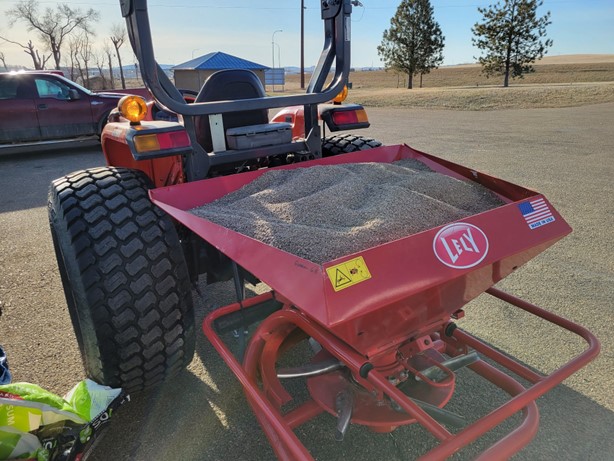 Gypsum Application - CaSo4
Gypsum Application - CaSo4
 New Top Dressing Machine
New Top Dressing Machine
The month of May will see the beginning of wetting agent applications & the startup of fungicide and fertilization applications across the golf course.
Spring aerification of the greens will occur the 3rd week of May.
This summer will see the transition of the current maintenance operations to our new facility just East of the driving range. This will be a huge improvement over our current situation with heat, running water, bathroom, office space, and a large equipment maintenance work area. A big THANK YOU to the City of Watford City and the Administration /Council for purchasing this building and their willingness to invest in Fox Hills Golf Course.
Until Next Time, Keep‘em on the Green!
April 2023
Greetings from Fox Hills Golf Course. This is the first of many blogs/reports detailing the Maintenance Practices and Conditioning of the Award-Winning Golf Course in Watford City.
I’d first like to introduce myself as Travis Rodenhizer. I moved here from Northwest Indiana in January. I’m a 1984 graduate from Stanley, ND and a 1989 graduate of North Dakota State University. I graduated with a BS in Horticulture and a Minor in Business Management. I’m married to a beautiful woman from Africa, Cynthia Bandawe. We are currently renting in the City of Watford City.
As I write this report, we have around 20” of snow on the level on the course. We’ve had some melting on the course but need a good solid week of 40-50 degree temperatures to really put a dent in the snowpack. The snowpack is good for moisture and protecting that sensitive growing point of the plant we call the “CROWN”. The crown of the plant is what gets damaged due to cold temperatures and wind during the winter months IF NOT covered by top dressing sand or covers.
Looking ahead at a possible opening date, I’m targeting the week of April 17-21. This will all depend on melting and daytime temperatures and with no more snow added to the current snowpack. The course has handled the winter and snowpack rather well. I’ll include a picture of a plug I have taken off #11 Green and #8 tee box. This will show you that there is life in the crown or growing point of the turf.
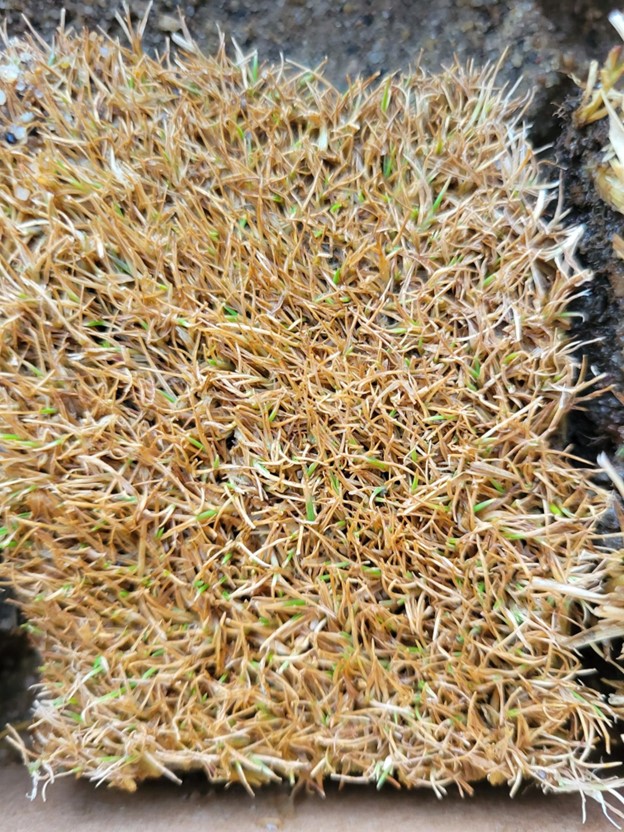
We’ve added a few more pieces of turf maintenance equipment to the fleet during the winter months. Fox Hills now has the ability to roll greens on a daily basis if needed. This will help improve green speed and lessen the potential for disease. The most important part of rolling is the ability to ‘roll’ only on days the agronomy conditions warrant. This would be during stressful times brought on by high temps and windy conditions. Some other new equipment added are a Top Dresser, Greens Groomer Brush, and John Deere Gator Utility Vehicles.
Here is the Process for Prepping the Greens for Play this Spring:
Opening Process on Greens
- Greens Cover Removal
- Blow off Greens with Blowers
- Brush Greens One Direction
- Roll Greens
- Cut Greens with Dirt Heads
- Put New Pins in Greens
I’m looking forward to an exciting season here at Fox Hills Golf Course and being able to share it with you via this Monthly Report. With Fox Hills still in its infancy, it will be fun to see it mature through the coming years with proper agronomy practices in place and the repair of #4 and #6 fairways.
Until Next Month, Keep It on The Green!



